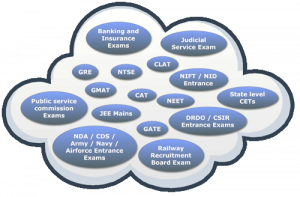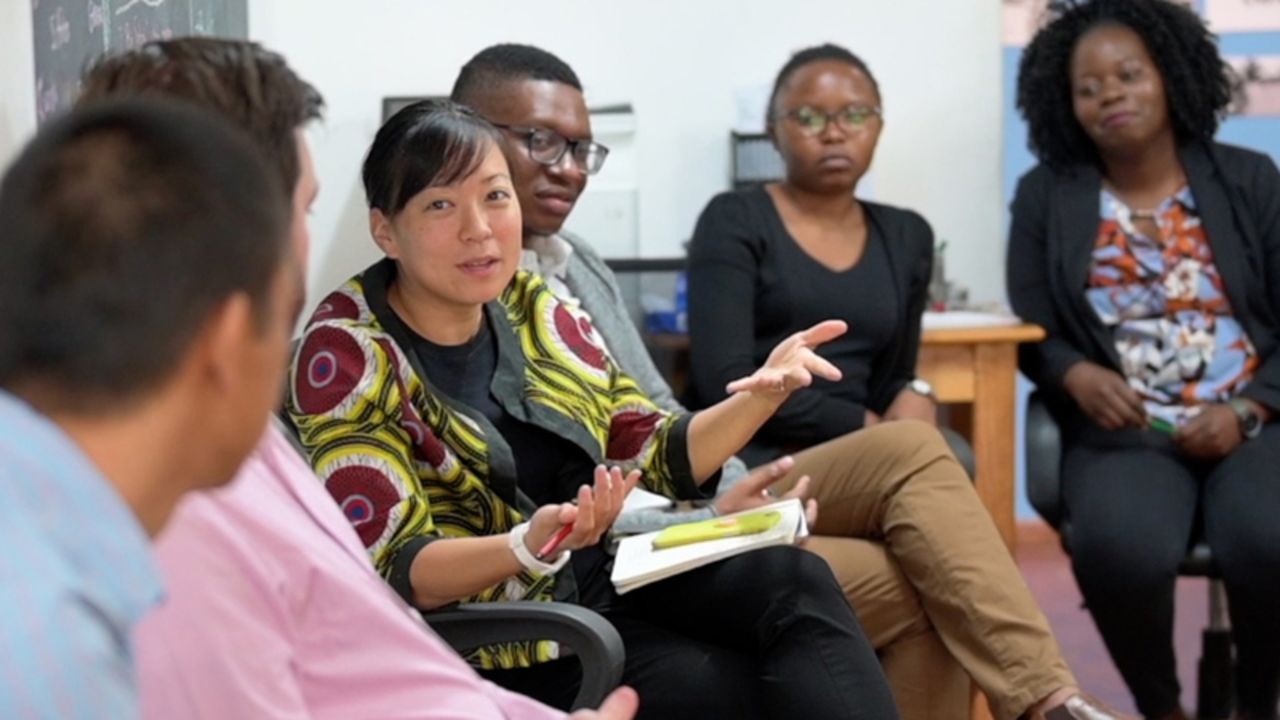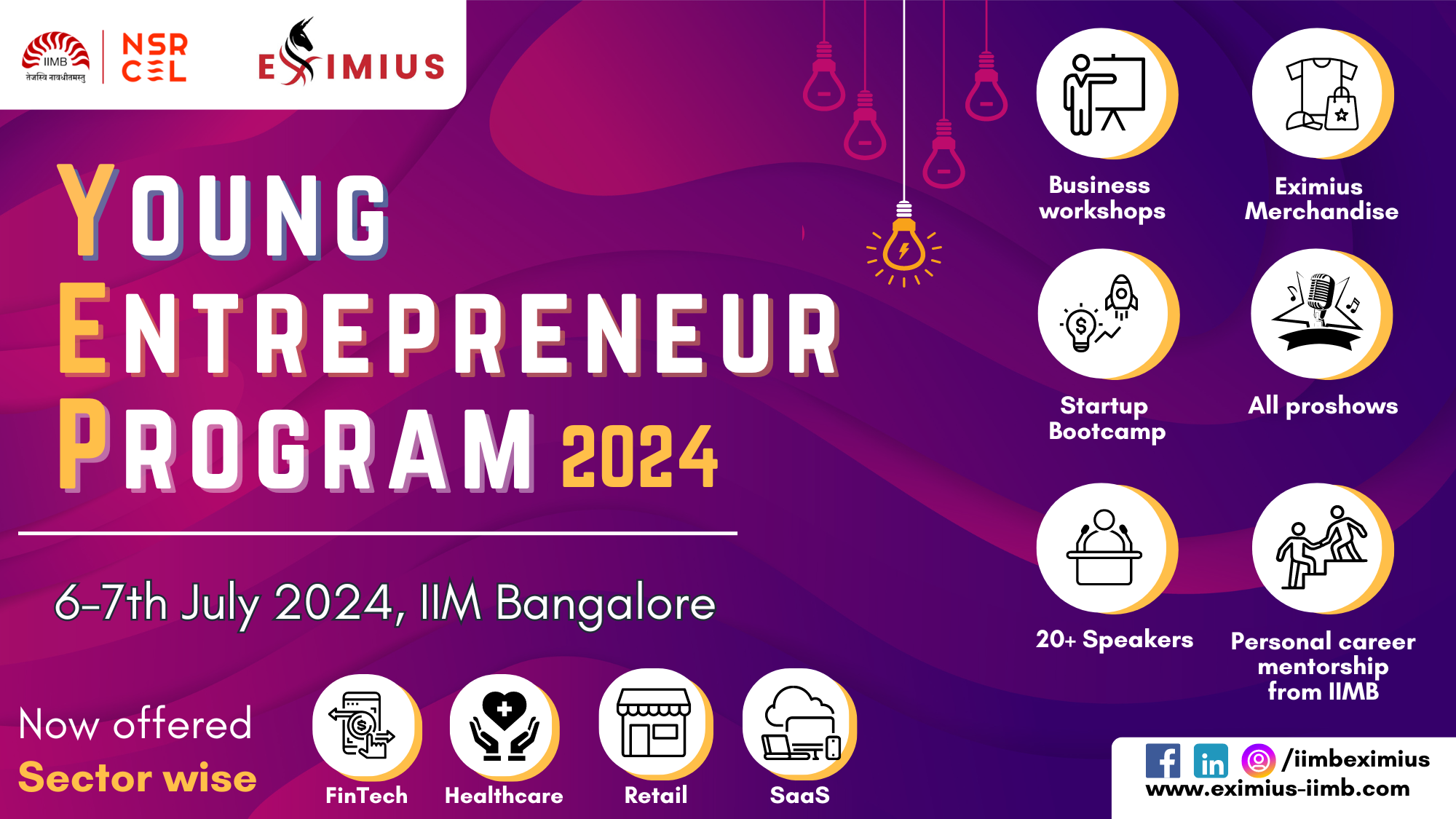Solving Case Studies: 8 Step-by-Step Strategies for Management Students
- by Tanu Bhatnagar
- Published: Oct 08, 2023, 09:45 IST
- Updated: Oct 08, 2023, 00:54 IST
- Tanu Bhatnagar
- October 8, 2023

Mastering the Art of Analyzing and Resolving Business Case Studies
Case study analysis is useful for management students. It’s more than a course—it’s a preview of your future job problems. These real-life examples allow you to apply class ideas and acquire a business-ready problem-solving attitude.
It’s not easy to master case study solving. Strategic thinking, critical thinking, and innovation are needed. This book covers the finest case study solution tactics to help you succeed academically and become a good manager. Solving a management case study is a crucial skill for students pursuing degrees in fields such as MBA, HRM, Finance, and Marketing.
Also, read 10 Proven Memorize Techniques for Students- Friendly Tips
8 Step-by-Step Strategies for Management Students
These case studies offer a practical application of management concepts, requiring students to analyze complex scenarios and devise solutions. In this comprehensive guide, we will outline a step-by-step approach to solving management case studies and provide a real-world example with a solution.
Step 1: Comprehensive Case Study Analysis
Comprehensive case study analysis is the cornerstone of effective problem-solving. It involves immersing yourself in the case study, not just skimming through it. Start by reading the case thoroughly, absorbing its context, characters, and central problem or objective. It’s crucial to understand the nuances of the situation presented, as even subtle details may significantly impact the solution.
During this phase, consider the following:
- Context : Understand the setting, time frame, and circumstances that led to the current situation.
- Characters : Familiarize yourself with the key individuals involved, their roles, motivations, and potential biases.
- Problem/Objective : Identify the core challenge or goal that the case revolves around.
Step 2: Familiarize with the Industry and Company
Familiarizing yourself with the industry and the specific company involved in the case study is pivotal. This step provides essential context and aids in making informed decisions and recommendations. Here’s how to approach it:
- Industry Analysis : Research the industry’s characteristics, trends, and dynamics. This knowledge helps you understand the broader competitive landscape and market forces at play.
- Company Background : Delve into the company’s history, products or services, market position, financial performance, and strategic priorities. This information helps you align your recommendations with the company’s goals and capabilities.
Step 3: Define the Core Problem/Objective

In this step, your objective is to pinpoint the primary issue or objective that the case study revolves around. By clarifying the problem that needs resolution or the goal that must be achieved, you set the stage for your analysis and decision-making. Consider the following:
- Problem Statement : Summarize the problem in a concise, clear statement. Ensure that your understanding aligns with the essence of the case.
- Objective Clarity : If the case involves an objective, such as expanding market share or improving profitability, define it with precision.
Step 4: Extract Relevant Information
A key aspect of case study analysis is extracting relevant facts and details from the case materials. This process involves revisiting the case study, both to reinforce your understanding and to gather pertinent information. Here’s how to approach it:
- Detailed Examination : Scrutinize the case for data, statistics, anecdotes, and any other information that sheds light on the problem or objective.
- Note-taking : Create a system for recording critical information, whether through written notes or mental models. This will aid in organizing your analysis.
Step 5: Identify Key Statements

Within the case study, there are often statements or pieces of information that hold particular significance. These statements can serve as guideposts during your analysis, helping you define and address the problem more precisely. Consider:
- Problem Clues : Look for statements that hint at the underlying issues or challenges.
- Objective Relevance : Identify statements that directly relate to the stated objective.
Step 6: Assess the External Environment
To make informed recommendations, you must assess the external environment surrounding the case. This step involves considering various factors that can influence the solution, including:
- Market Conditions : Analyze the market’s size, growth rate, trends, and competitive landscape.
- Regulatory Environment : Evaluate the impact of regulations, laws, and government policies on the case.
- Resource Availability : Understand the availability of resources, such as capital, talent, and technology.
- Competitive Forces : Assess the competitive forces at play, including existing rivals, potential entrants, suppliers, and buyers.
Also, read Top 10 Hobbies That Boost Your IQ: A Guide for Students
Step 7: Address Real-Life Constraints
Recognize that real-life problem-solving often comes with limitations, including incomplete information and time constraints. You should be prepared to make decisions based on the available data and within reasonable time limits. Consider:
- Time Sensitivity : Acknowledge any time pressures that may affect the decision-making process.
- Resource Constraints : Understand the limits of available resources, such as budget, manpower, or technology.
Step 8: Fill Information Gaps with Realistic Assumptions
Information gaps are common in real-world scenarios. To bridge these gaps, make realistic assumptions that align with the context of the case study. Use your judgment and critical thinking to supplement missing details while staying grounded in the case’s reality.
By following these steps diligently, you can approach management case studies methodically and develop well-structured, informed solutions that address the core problem or objective effectively

Problem: XYZ Corporation, a well-established software development firm, is grappling with ongoing employee performance challenges. Several members of its software development team consistently fail to meet project deadlines and produce work below the company’s quality standards.
Problem Question 1: What is the core problem that XYZ Corporation is facing concerning employee performance?
The central issue that XYZ Corporation is confronting concerning employee performance is the persistent underperformance of several software developers within the organization. These individuals consistently fail to meet project deadlines and produce work that falls significantly below the company’s established quality standards. This recurring problem has become a significant impediment to the company’s software development projects.
Problem Question 2: How are the underperforming employees affecting the company’s software development projects and overall business operations?
The underperforming employees in XYZ Corporation are having a substantial negative impact on the company’s software development projects and overall business operations. Their consistent inability to meet project deadlines results in significant delays in project completion, disrupting project schedules and affecting the company’s ability to deliver products and services on time. Furthermore, the compromised quality of their work leads to subpar products, potentially resulting in client dissatisfaction and eroding the company’s reputation. These issues collectively undermine the company’s profitability as it grapples with missed opportunities and the costs associated with addressing substandard work. Addressing this challenge is imperative for XYZ Corporation to ensure its continued success and competitiveness in the software development industry.
. Student Approach to Solve:
- Begin by thoroughly reading the case study to grasp its context, characters, and the central problem or objective.
- Understanding the broader business environment will aid in making informed decisions and recommendations.
- Identify the primary issue or objective in the case.
- Create a mental or written model of the core problem or objective and make note of critical information that informs your understanding.
- Acknowledge that real-life problems often come with incomplete information and time constraints.
- Use your judgment to supplement missing details.
By following these steps and considering the provided answers, students can approach and solve the case study effectively, offering valuable insights and recommendations to address XYZ Corporation’s employee performance challenges.
Finally, the case study solution connects management theory with practice. It helps students analyse difficult circumstances, make educated judgements, and find effective solutions, which employers in numerous sectors value.
The above guide’s techniques can help students succeed in management school and prepare them for job difficulties and possibilities. Accept case studies as learning opportunities, improve your problem-solving abilities, and become a skilled and resourceful manager. The greatest method to learn is through doing, and case study solution leads to real-world success.
Also, read 10 Best Economic Books for Commerce Students

Meet Tanu Bhatnagar, an educational expert with extensive experience in teaching, research and mentoring.With a decade in... (Full bio)
Latest Exams
Best colleges.

Trending News

Best Books to Read in 2023
Best Books to Read in 2023 Are you a bookworm or a bibliophile, if yes, then this is the ...

10 Proven Memorize Techniques for Students- Friendly Tips
In the exhilarating journey of 10 Proven Memorize Techniques for Students learning, memory is your trusty companion. Whether ...

Top 20 Toughest exams in world Latest List 2023
Top 20 toughest exams in world is about exams in the world that required very hard work to ...

Top 20 toughest exams in India Latest List 2023
Top 20 toughest exams in India - Exams are the perhaps most toughest moments for any student. A ...

Top 20 Colleges of DU Latest List 2023
Top 20 Colleges of DU Getting admissions to the top 20 colleges of DU is a dream for every ...

Top 20 NITs of India Latest List 2023
Top 20 NITs of India - Amongst the 31 NITs in India, today, we are talking ...

Top 12 Artificial Intelligence Colleges in Mumbai
Here are the Top 12 Artificial Intelligence in Mumbai. Artificial intelligence (AI) refers to the simulation of human ...

Best Science Courses after 12th
As you stand on the Best Science Courses after 12th academic journey, the realm of science beckons, offering ...
Curated Latest News For You

Top 12 Students Benefits of Online Learning

JEE Advanced 2023 provisional answer key, access links here

Best 5 Time Management Tips for Competitive Exams

JEE Advanced 2023 registration starts on 30 April 2023

Score High in NEET 2023 With these Key Subject wise topics

Top 8 Jobs in Indian Army after Plus Two
The sooner you start, the better .
Millions of students have entrusted CollegeChalo to facilitate their seamless and smooth admission process to their dream colleges and universities. With CollegeChalo, you can gain a competitive edge by easily accessing exam and course details to stay ahead of the admission journey. What are you waiting for?
ADMISSION ENQUIRY FORM
Enter basic details, signin with google, or use your email, signup with google, forgot your password, resetting new password, connecting you to your dream college.
Discover Leading Universities and Colleges, Explore Courses, and Navigate Exams
search results:
How CollegeChalo helps you in admission ?
- With a completely online admission process, we help you get college admission without having to step out.
- Upto 50% discount on application forms
- 24*7 counselling facilities available
- Ask and receive answers from experts and other users

- SUGGESTED TOPICS
- The Magazine
- Newsletters
- Managing Yourself
- Managing Teams
- Work-life Balance
- The Big Idea
- Data & Visuals
- Reading Lists
- Case Selections
- HBR Learning
- Topic Feeds
- Account Settings
- Email Preferences
What the Case Study Method Really Teaches
- Nitin Nohria

Seven meta-skills that stick even if the cases fade from memory.
It’s been 100 years since Harvard Business School began using the case study method. Beyond teaching specific subject matter, the case study method excels in instilling meta-skills in students. This article explains the importance of seven such skills: preparation, discernment, bias recognition, judgement, collaboration, curiosity, and self-confidence.
During my decade as dean of Harvard Business School, I spent hundreds of hours talking with our alumni. To enliven these conversations, I relied on a favorite question: “What was the most important thing you learned from your time in our MBA program?”
- Nitin Nohria is the George F. Baker Jr. and Distinguished Service University Professor. He served as the 10th dean of Harvard Business School, from 2010 to 2020.
Partner Center
What is the Case Study Method?

Overview Dropdown up
Overview dropdown down, celebrating 100 years of the case method at hbs.
The 2021-2022 academic year marks the 100-year anniversary of the introduction of the case method at Harvard Business School. Today, the HBS case method is employed in the HBS MBA program, in Executive Education programs, and in dozens of other business schools around the world. As Dean Srikant Datar's says, the case method has withstood the test of time.
Case Discussion Preparation Details Expand All Collapse All
In self-reflection in self-reflection dropdown down, in a small group setting in a small group setting dropdown down, in the classroom in the classroom dropdown down, beyond the classroom beyond the classroom dropdown down, how the case method creates value dropdown up, how the case method creates value dropdown down, in self-reflection, in a small group setting, in the classroom, beyond the classroom.

How Cases Unfold In the Classroom
How cases unfold in the classroom dropdown up, how cases unfold in the classroom dropdown down, preparation guidelines expand all collapse all, read the professor's assignment or discussion questions read the professor's assignment or discussion questions dropdown down, read the first few paragraphs and then skim the case read the first few paragraphs and then skim the case dropdown down, reread the case, underline text, and make margin notes reread the case, underline text, and make margin notes dropdown down, note the key problems on a pad of paper and go through the case again note the key problems on a pad of paper and go through the case again dropdown down, how to prepare for case discussions dropdown up, how to prepare for case discussions dropdown down, read the professor's assignment or discussion questions, read the first few paragraphs and then skim the case, reread the case, underline text, and make margin notes, note the key problems on a pad of paper and go through the case again, case study best practices expand all collapse all, prepare prepare dropdown down, discuss discuss dropdown down, participate participate dropdown down, relate relate dropdown down, apply apply dropdown down, note note dropdown down, understand understand dropdown down, case study best practices dropdown up, case study best practices dropdown down, participate, what can i expect on the first day dropdown down.
Most programs begin with registration, followed by an opening session and a dinner. If your travel plans necessitate late arrival, please be sure to notify us so that alternate registration arrangements can be made for you. Please note the following about registration:
HBS campus programs – Registration takes place in the Chao Center.
India programs – Registration takes place outside the classroom.
Other off-campus programs – Registration takes place in the designated facility.
What happens in class if nobody talks? Dropdown down
Professors are here to push everyone to learn, but not to embarrass anyone. If the class is quiet, they'll often ask a participant with experience in the industry in which the case is set to speak first. This is done well in advance so that person can come to class prepared to share. Trust the process. The more open you are, the more willing you’ll be to engage, and the more alive the classroom will become.
Does everyone take part in "role-playing"? Dropdown down
Professors often encourage participants to take opposing sides and then debate the issues, often taking the perspective of the case protagonists or key decision makers in the case.
View Frequently Asked Questions
Subscribe to Our Emails
- PRO Courses Guides New Tech Help Pro Expert Videos About wikiHow Pro Upgrade Sign In
- EDIT Edit this Article
- EXPLORE Tech Help Pro About Us Random Article Quizzes Request a New Article Community Dashboard This Or That Game Popular Categories Arts and Entertainment Artwork Books Movies Computers and Electronics Computers Phone Skills Technology Hacks Health Men's Health Mental Health Women's Health Relationships Dating Love Relationship Issues Hobbies and Crafts Crafts Drawing Games Education & Communication Communication Skills Personal Development Studying Personal Care and Style Fashion Hair Care Personal Hygiene Youth Personal Care School Stuff Dating All Categories Arts and Entertainment Finance and Business Home and Garden Relationship Quizzes Cars & Other Vehicles Food and Entertaining Personal Care and Style Sports and Fitness Computers and Electronics Health Pets and Animals Travel Education & Communication Hobbies and Crafts Philosophy and Religion Work World Family Life Holidays and Traditions Relationships Youth
- Browse Articles
- Learn Something New
- Quizzes Hot
- This Or That Game
- Train Your Brain
- Explore More
- Support wikiHow
- About wikiHow
- Log in / Sign up
- Education and Communications
How to Write a Management Case Study
Last Updated: December 23, 2023
wikiHow is a “wiki,” similar to Wikipedia, which means that many of our articles are co-written by multiple authors. To create this article, volunteer authors worked to edit and improve it over time. This article has been viewed 141,737 times. Learn more...
A management case study contains a description of real-life management issues and proposed solutions. Students, practitioners and professionals write case studies to thinking critically about issues, and devise and implement remedies for challenging management situations. A case study generally contains facts, theories, assumptions, analysis, and prioritized solutions. The following are the steps for writing a management case study.
Identify the Objective, Method and Facts

- Choose an analytical approach to increase awareness. In the preliminary stages of solving management problems, an analytical case study might best meet the goal of alerting upper management to core facts and issues. An analytical case study primarily focuses on what has occurred and why.
- Select a problem-solving approach to pinpoint and solve major issues. If the goal is to make solution recommendations, write a problem-solving case study that clearly outlines problems and solutions.

Set the Scope for Readers

Focus on Issues and Solutions

- Address the challenges that might accompany suggested solutions. For example, cross-cultural conflicts in an organization might require additional training for managers, which may require funds or an extensive search for topic experts.
Provide a Clear Conclusion

Cite References

Community Q&A
You Might Also Like

- ↑ https://www.wordstream.com/blog/ws/2017/04/03/how-to-write-a-case-study
- ↑ https://libguides.usc.edu/writingguide/assignments/casestudy
- http://monash.edu/lls/llonline/quickrefs/27-case-study.pdf
- http://www.schreyerinstitute.psu.edu/pdf/CaseWritingGuide.pdf
About This Article
To write a management case study, first give a clear industry overview of the problem and explain theories and current knowledge. Next, pinpoint all the important issues and identify any underlying problems. For example, conflicts between team members might stem from unclear workplace policies. Finally, generate effective solutions and explain why they will work. Wrap it up with a conclusion that summarizes the problems and solutions you discussed. Read on for more details on how to conduct research for a management case study and cite your sources. Did this summary help you? Yes No
- Send fan mail to authors
Did this article help you?

Featured Articles

Trending Articles

Watch Articles

- Terms of Use
- Privacy Policy
- Do Not Sell or Share My Info
- Not Selling Info
wikiHow Tech Help Pro:
Level up your tech skills and stay ahead of the curve
- Harvard Business School →
- Academic Experience
- Faculty & Research
- The Field Method
- A Global Experience
The HBS Case Method
- Joint Degree Programs
- The Section Experience
- The HBS Case Method →
Take a Seat in the MBA Classroom
- Harvard Business School
How the HBS Case Method Works

How the Case Method Works

- Read and analyze the case. Each case is a 10-20 page document written from the viewpoint of a real person leading a real organization. In addition to background information on the situation, each case ends in a key decision to be made. Your job is to sift through the information, incomplete by design, and decide what you would do.
- Discuss the case. Each morning, you’ll bring your ideas to a small team of classmates from diverse professional backgrounds, your discussion group, to share your findings and listen to theirs. Together, you begin to see the case from different perspectives, better preparing you for class.
- Engage in class. Be prepared to change the way you think as you debate with classmates the best path forward for this organization. The highly engaged conversation is facilitated by the faculty member, but it’s driven by your classmates’ comments and experiences. HBS brings together amazingly talented people from diverse backgrounds and puts that experience front and center. Students do the majority of the talking (and lots of active listening), and your job is to better understand the decision at hand, what you would do in the case protagonist’s shoes, and why. You will not leave a class thinking about the case the same way you thought about it coming in! In addition to learning more about many businesses, in the case method you will develop communication, listening, analysis, and leadership skills. It is a truly dynamic and immersive learning environment.
- Reflect. The case method prepares you to be in leadership positions where you will face time-sensitive decisions with limited information. Reflecting on each class discussion will prepare you to face these situations in your future roles.
Student Perspectives

“I’ve been so touched by how dedicated other people have been to my learning and my success.”
Faculty Perspectives

“The world desperately needs better leadership. It’s actually one of the great gifts of teaching here, you can do something about it.”
Alumni Perspectives

“You walk into work every morning and it's like a fire hose of decisions that need to be made, often without enough information. Just like an HBS case.”
Celebrating the Inaugural HBS Case

“How do you go into an ambiguous situation and get to the bottom of it? That skill – the skill of figuring out a course of inquiry, to choose a course of action – that skill is as relevant today as it was in 1921.”

How to Solve a Management Case Study
- Post author: myspeakhr
- Post category: Uncategorized
- Reading time: 7 mins read
This article will help you to answer the question – How to solve a Management case study ? You can use these simple ways to solve any case study of Human Resource Management, Marketing Management, Finance management or other Management specializations. Further students of MBA, MMM, MPM, BBA, and other management courses can use these simple steps or the same method to solve a management case study.
The current corporate scenario urges the students to know about the practical applicability of management concepts in day-to-day operations hence to get such a practical knowledge case study is one of the vital tools.
Management case study
Management Case study is a highly recommended method in teaching and learning process because it enables the students to:
- Understand the situation
- Locate the problem
- Analysis of the case
- Find out various available suggestions
- Finally, conclude the appropriate solution.
Case studies are included in the Syllabus of management degrees in almost all Universities. But, the pattern for solving these case studies varies from university to university.
Generally students are not sure about which method they have to follow to solve a management case study. This article makes you familiar with some methods to solve a case study in Management.
Case studies can be of two types:
a) case study with questions b) case study without questions
Let us see some interesting methods to solve both the type of case studies.
How to Solve Case study with questions
The case will be given and some questions will be given at the end for which you have to answer after analyzing the case completely. Moreover in this method there won’t be much problem as the complete case details are given, the problem will be in front of you. Here you just have to answer the questions given below.
The method to solve management case:
- Start with an introduction wherein you will cover the complete case.
- Answer the questions one by one in a clear manner (*)
- The length of your answer must depend on the marks assigned for that question.
- Try to associate your answer with any of the concept or theory in the given subject. For example, case is related to general management you can relate it with Principles of management MBO etc). And highlight that ( do this only when you are sure about the concept)
- Write a conclusion for the case for the main problem in the case.
(*) In case there is a question like “if you are the manager what would be your reaction in the given situation”.
You can answer in the following way:-
• list all the possible options in the given situation
• select the best option from your view-point
• conclude it like why that is the best option by mentioning the advantages of such an option.
b) case study without questions:-
In this type of cases, there won’t be any questions only complete case will be given. And the students get confused about what to do with such type of case type. The following are the ways in which a case can be solved and among those things whichever is applicable or possible in that you can include it in the solution and solve the case.
Introduction:
Give a detailed description of the case in two or three paragraphs and cover all the major issues in the case in your introduction.
SWOT analysis:-
Strength Weakness Opportunities and Thread. You have to list the strength weakness opportunity and the threat of the company. Strength and weakness stand internal in which the company can have control over that and Opportunity and Thread stand for External in which the company does not have any control.
Identify the Problems:
Find out major issues in the case and highlight those problems consider those problems as questions. Frame the problem in a proper way.
Find out the solutions:-
This is the part wherein you are going to give the solution for the case exactly. In the previous step you have framed the problems here you need to give solutions for each problem. Consider the problems as questions and start answering for each question.
You can answer the question straight away about what you feel. Like how you reply to your other theory questions the same way you have to answer these questions. You can highlight the subheadings and quote some definition in the answer if any concept is involved in that
You can explain your answer by aligning the answer with any theory related to that. This method is not possible in all cases. But if it related to employee motivation, International Trade Blocks, marketing strategy etc then you can align your answer with Maslow’s Hierarchy theory, Trade Blocks theory and BCG model etc.. This will fetch you more marks but one thing you need to be clear that you must know the theory completely.
This method will take you in the proper direction. As said earlier consider the problem as question. Take the question one by one. Find the possible solution for each question. And also write the advantages and disadvantages for that solution. If you have more than one options for the same problem list the options one by one along with the advantages and disadvantages of each option. Finally, conclude the question by comparing the option and write the best option among the listed option and support your conclusion.
Eg. Refer this case MAKAR Gained p rofit by missed opportunity & lost wealth
In this case, if the question is like “what would have Makar done to save the company without removing the employees”
- Give an Introduction
- List down the options one by like
A. Expanding the business B. Expanding the market C. Lease a part of a production plant to another company D. Close the plant partially
Now take each option and write its advantage and disadvantage (Like)
Give your first pro. This is the second pro
Your first cons. Write the second cons
Write one cons and followed by pros
Write second cons followed by pros
And Continue for other options.
Finally, conclude the best option and support your answer.
This method if written properly neatly and cleanly will fetch you more marks.
Hence you can follow any of the above-said methods to solve a case study in Management if no specific method is mentioned in the question paper. In each method give an introduction and complete with a conclusion. And underline where ever required. And fetch more marks in Cases. you can check free case studies here
Share this:
You might also like, know best mcq’s on basics of shrm, interesting mcq’s on basic strategic management, hrm case study in leadership, submit a comment cancel reply.
This site uses Akismet to reduce spam. Learn how your comment data is processed .

- Testimonial
- Web Stories
Learning Home

Not Now! Will rate later

MBA Case Studies - Solved Examples

Need of MBA Case Studies
Case i: chemco case.
- ChemCo is a quality leader in the U.K. car batteries market.
- Customer battery purchases in the automobile market are highly seasonal.
- The fork-lift business was added to utilize idle capacity during periods of inactivity.
- This is a low-growth industry (1% annual growth over the last two years)
- Large customers are sophisticated and buy based on price and quality. Smaller customers buy solely on price.
- There is a Spanish competitor in the market who offers low priced batteries of inferior quality.

Essential MBA GD Guide: Key Topics with Strategies Free
- Importance of Group Discussions
- Tips and Strategies to handle a GD
- Top 25 GD topics
- Free Download
- Established player in car batteries
- Losing heavily in fork-lift truck batteries
- Old fashioned owner resistance to change
- Low priced competitors
- Foreign competitors gaining market share
- Decisive Interview, GD & Essay prep
- GD: Topics 2021
- GD: Approach
- GD: Do's and Don'ts
- GD: Communications
- Solved GDs Topics
GD Introduction
- Types of GD topics: Techniques
- GD: Ettiquette
- GD: Content
- Solved Case Studies
- High quality product, but low end customers care more about price than quality
- Mismanaged product diversification in a price sensitive market
- Alternative 1: Establish an Off-Brand for the fork-lift business
- Alternative 2: Educate the customer market about product quality
- Alternative 3: Exit the fork-lift battery business
- Establishing the firm's quality image
- Increase in market share
- Increase in sales
- Cost of the product
- Protect firm's quality image in the automobile industry
- Redesigned product to reduce the cost of manufacture
- Low price to enable it to compete with Spanish producer
- Make use of the quality leadership in car batteries market
- Offer reliability testing, extended warranties etc. to promote quality image
- Set higher prices to extract surplus from these advantages
- A passive strategy, not proactive
- Recommendations: Alternative 1 is recommended in this case. Since the firm operates in an industry which has low growth, hence it can expand market share and sales only by taking the customers from other players. Hence, it needs to tackle the Spanish competitor head-on by aggressively pricing its product. At the same time, launching a low-priced product under the same brand name erodes the high quality image in the car batteries market. Hence, the best option is to go for an off-brand to target the fork-lift customers who are increasingly becoming price sensitive. This will enable the company to ward off the threat in short-term and build its position strongly in the long-term.

Case II: NAKAMURA LACQUER COMPANY
- The Nakamura Lacquer Company: The Nakamura Lacquer Company based in Kyoto, Japan was one of the many small handicraft shops making lacquerware for the daily table use of the Japanese people.
- Mr. Nakamura- the personality: In 1948, a young Mr. Nakamura took over his family business. He saw an opportunity to cater to a new market of America, i.e. GI's of the Occupation Army who had begun to buy lacquer ware as souvenirs. However, he realized that the traditional handicraft methods were inadequate. He was an innovator and introduced simple methods of processing and inspection using machines. Four years later, when the Occupation Army left in 1952, Nakamura employed several thousand men, and produced 500,000 pieces of lacquers tableware each year for the Japanese mass consumer market. The profit from operations was $250,000.
- The Brand: Nakamura named his brand “Chrysanthemum” after the national flower of Japan, which showed his patriotic fervor. The brand became Japan's best known and best selling brand, being synonymous with good quality, middle class and dependability.
- The Market: The market for lacquerware in Japan seems to have matured, with the production steady at 500,000 pieces a year. Nakamura did practically no business outside of Japan. However, early in 1960, when the American interest in Japanese products began to grow, Nakamura received two offers
- The Rose and Crown offer: The first offer was from Mr. Phil Rose, V.P Marketing at the National China Company. They were the largest manufacturer of good quality dinnerware in the U.S., with their “Rose and Crown” brand accounting for almost 30% of total sales. They were willing to give a firm order for three eyes for annual purchases of 400,000 sets of lacquer dinnerware, delivered in Japan and at 5% more than what the Japanese jobbers paid. However, Nakamura would have to forego the Chrysanthemum trademark to “Rose and Crown” and also undertaken to sell lacquer ware to anyone else the U.S. The offer promised returns of $720,000 over three years (with net returns of $83,000), but with little potential for the U.S. market on the Chrysanthemum brand beyond that period.
- The Semmelback offer: The second offer was from Mr. Walter Sammelback of Sammelback, Sammelback and Whittacker, Chicago, the largest supplier of hotel and restaurant supplies in the U.S. They perceived a U.S. market of 600,000 sets a year, expecting it to go up to 2 million in around 5 years. Since the Japanese government did not allow overseas investment, Sammelback was willing to budget $1.5 million. Although the offer implied negative returns of $467,000 over the first five years, the offer had the potential to give a $1 million profit if sales picked up as anticipated.
- Meeting the order: To meet the numbers requirement of the orders, Nakamura would either have to expand capacity or cut down on the domestic market. If he chose to expand capacity, the danger was of idle capacity in case the U.S. market did not respond. If he cut down on the domestic market, the danger was of losing out on a well-established market. Nakamura could also source part of the supply from other vendors. However, this option would not find favor with either of the American buyers since they had approached only Nakamura, realizing that he was the best person to meet the order.
- Decision problem: Whether to accept any of the two offers and if yes, which one of the two and under what terms of conditions?
- To expand into the U.S. market.
- To maintain and build upon their reputation of the “Chrysanthemum” brand
- To increase profit volumes by tapping the U.S. market and as a result, increasing scale of operations.
- To increase its share in the U.S. lacquerware market.
- Profit Maximization criterion: The most important criterion in the long run is profit maximization.
- Risk criterion: Since the demand in the U.S. market is not as much as in Japan.
- Brand identity criterion: Nakamura has painstakingly built up a brand name in Japan. It is desirable for him to compete in the U.S. market under the same brand name
- Flexibility criterion: The chosen option should offer Nakamura flexibility in maneuvering the terms and conditions to his advantage. Additionally, Nakamura should have bargaining power at the time of renewal of the contract.
- Short term returns: Nakamura should receive some returns on the investment he makes on the new offers. However, this criterion may be compromised in favor of profit maximization in the long run.?
- Reject both: React both the offers and concentrate on the domestic market
- Accept RC offer: Accept the Rose and Crown offer and supply the offer by cutting down on supplies to the domestic market or through capacity expansion or both
- Accept SSW: offer; accept the SSW offer and meet it through cutting down on supply to the domestic market or through capacity expansion or both. Negotiate term of supply.
- Reject both: This option would not meet the primary criterion of profit maximization. Further, the objective of growth would also not be met. Hence, this option is rejected.
- Accept RC offer: The RC offer would assure net returns of $283,000 over the next three yeas. It also assures regular returns of $240,000 per year. However, Nakamura would have no presence in the U.S. with its Chrysanthemum brand name The RC offer would entail capacity expansion, as it would not be possible to siphon of 275,000 pieces from the domestic market over three years without adversely affecting operations there. At the end of three years, Nakamura would have little bargaining power with RC as it would have an excess capacity of 275,000 pieces and excess labor which it would want to utilize. In this sense the offer is risky. Further, the offer is not flexible. Long-term profit maximization is uncertain in this case a condition that can be controlled in the SSW offer. Hence, this offer is rejected.
- Accept SSW offer: The SSW offer does not assure a firm order or any returns for the period of contract. Although, in its present form the offer is risky if the market in the U.S. does not pick up as expected, the offer is flexible. If Nakamura were to exhibit caution initially by supplying only 300,000 instead of the anticipated 600,000 pieces, it could siphon off the 175,000 required from the domestic market. If demand exists in the U.S., the capacity can be expanded. With this offer, risk is minimized. Further, it would be competing on its own brand name. Distribution would be taken care of and long-term profit maximization criterion would be satisfied as this option has the potential of $1 million in profits per year. At the time of renewal of the contract, Nakamura would have immense bargaining power.
- Negotiate terms of offer with SSW: The terms would be that NLC would supply 300,000 pieces in the first year. If market demand exists, NLC should expand capacity to provide the expected demand.
- Action Plan: In the first phase, NLC would supply SSW with 300,000 pieces. 125,000 of these would be obtained by utilizing excess capacity, while the remaining would be obtained from the domestic market. If the expected demand for lacquer ware exists in the U.S., NLC would expand capacity to meet the expected demand. The debt incurred would be paid off by the fifth year.
- Contingency Plan: In case the demand is not as expected in the first year, NLC should not service the U.S. market and instead concentrate on increasing penetration in the domestic market.
FAQs about MBA Case Studies
- Group Discussions
- Personality
- Past Experiences
Most Popular Articles - PS

100 Group Discussion (GD) Topics for MBA 2024

Solved GDs Topic

Top 50 Other (Science, Economy, Environment) topics for GD
5 tips for starting a GD

GD FAQs: Communication

GD FAQs: Content

Stages of GD preparation

Group Discussion Etiquettes

Case Study: Tips and Strategy

Practice Case Studies: Long

Practice Case Studies: Short
5 tips for handling Abstract GD topics
5 tips for handling a fish market situation in GD
5 things to follow: if you don’t know much about the GD topic

Do’s and Don’ts in a Group Discussion
5 tips for handling Factual GD topics

How to prepare for Group Discussion

The Simple Trick For Solving Strategy Case Studies
By insideiim counselling.

Join InsideIIM GOLD

Webinars & Workshops

- Compare B-Schools

- Free CAT Course

Take Free Mock Tests

Upskill With AltUni

CAT Study Planner

Related Tags

IIM Bangalore Launches Eximius 2024: India’s largest E-Summit In Collaboration With NSRCEL
Mini Mock Test
CUET-PG Mini Mock 2 (By TISS Mumbai HRM&LR)
CUET-PG Mini Mock 3 (By TISS Mumbai HRM&LR)

CUET-PG Mini Mock 1 (By TISS Mumbai HRM&LR)
MBA Admissions 2024 - WAT 1
SNAP Quantitative Skills
SNAP Quant - 1

SNAP VARC Mini Mock - 1
SNAP Quant Mini Mock - 2
SNAP DILR Mini Mock - 4
SNAP VARC Mini Mock - 2
SNAP Quant Mini Mock - 4
SNAP LR Mini Mock - 3
SNAP Quant Mini Mock - 3
SNAP VARC Mini Mock - 3
SNAP - Quant Mini Mock 5
XAT Decision Making 2020
XAT Decision Making 2019
XAT Decision Making 2018
XAT Decision Making -10
XAT Decision Making -11
XAT Decision Making - 12
XAT Decision Making - 13
XAT Decision Making - 14
XAT Decision Making - 15
XAT Decision Making - 16
XAT Decision Making - 17
XAT Decision Making 2021
LR Topic Test
DI Topic Test
ParaSummary Topic Test
Take Free Test Here
Life of indian mba students in milan, italy - what’s next.
By InsideIIM Career Services
IMI Delhi: Worth It? | MBA ROI, Fees, Selection Process, Campus Life & More | KYC
How to calculate the real cost of an mba in 2024 ft. imt nagpur professors, mahindra university mba: worth it | campus life, academics, courses, placement | know your campus, how to uncover the reality of b-schools before joining, ft. masters' union, gmat focus edition: syllabus, exam pattern, scoring system, selection & more | new gmat exam, how to crack the jsw challenge 2023: insider tips and live q&a with industry leaders, why an xlri jamshedpur & fms delhi graduate decided to join the pharma industry, subscribe to our newsletter.
For a daily dose of the hottest, most insightful content created just for you! And don't worry - we won't spam you.
Who Are You?

Top B-Schools

InsideIIM Gold

InsideIIM.com is India's largest community of India's top talent that pursues or aspires to pursue a career in Management.

Follow Us Here
Konversations By InsideIIM
TestPrep By InsideIIM
- NMAT by GMAC
- Score Vs Percentile
- Exam Preparation
- Explainer Concepts
- Free Mock Tests
- RTI Data Analysis
- Selection Criteria
- CAT Toppers Interview
- Study Planner
- Admission Statistics
- Interview Experiences
- Explore B-Schools
- B-School Rankings
- Life In A B-School
- B-School Placements
- Certificate Programs
- Katalyst Programs
Placement Preparation
- Summer Placements Guide
- Final Placements Guide
Career Guide
- Career Explorer
- The Top 0.5% League
- Konversations Cafe
- The AltUni Career Show
- Employer Rankings
- Alumni Reports
- Salary Reports
Copyright 2024 - Kira9 Edumedia Pvt Ltd. All rights reserved.

Use Our Resources and Tools to Get Started With Your Preparation!
Approaching a case, how to solve a case study – a structured approach.
Would you like to see this YouTube video?
Without your consent we cannot embed YouTube videos. Click the button below to allow YouTube videos to be embedded .
By allowing this service, you consent, in accordance with article 49 paragraph 1 sentence 1 lit. a GDPR , to your data being processed in the USA . The USA is not considered to have adequate data protection legislation. Your data could be accessed by law enforcement without prior public trial in court. You can change your settings regarding consent to external services at any time in our Cookie and Privacy Settings .
Key takeaways:
- Follow the 4 Commandments
- Get a feeling and true understanding of the problem and the objective
- Lay out an exhaustive, well-thought-through structure
- Build an initial hypothesis and prioritize the different areas
- Gather data based on your hypothesis and priorities
- Evaluate the data keeping in mind your problem and goal
- Track down the root cause and the area which would have the biggest impact
- Develop possible solutions, weigh them, and choose the best one. Make sure your solution is based on the data irrespective of whether it is positive or negative. Keep in mind that the best feasible solution is truly the best solution!
Do you need more insightful tips on how to approach your case interview in management consulting? Read our comprehensive case interview guide that gives you tips for your case interview preparation, step-by-step explanations to solve the case, and lastly 13 valuable tips for your actual interview day.
Questions on This Article
Is there an easy way yo think about hypothesis:issue tree:proving&disproving ..., related cases.

MBB Final Round Case - Smart Education
Bain 1st round case – blissottica.

BCG - YodaPhone
Bain case style - growth offensive at chemcorp [new], bain 1st round case – airservice [new].

- All Headlines

Top 40 Most Popular Case Studies of 2021
Two cases about Hertz claimed top spots in 2021's Top 40 Most Popular Case Studies
Two cases on the uses of debt and equity at Hertz claimed top spots in the CRDT’s (Case Research and Development Team) 2021 top 40 review of cases.
Hertz (A) took the top spot. The case details the financial structure of the rental car company through the end of 2019. Hertz (B), which ranked third in CRDT’s list, describes the company’s struggles during the early part of the COVID pandemic and its eventual need to enter Chapter 11 bankruptcy.
The success of the Hertz cases was unprecedented for the top 40 list. Usually, cases take a number of years to gain popularity, but the Hertz cases claimed top spots in their first year of release. Hertz (A) also became the first ‘cooked’ case to top the annual review, as all of the other winners had been web-based ‘raw’ cases.
Besides introducing students to the complicated financing required to maintain an enormous fleet of cars, the Hertz cases also expanded the diversity of case protagonists. Kathyrn Marinello was the CEO of Hertz during this period and the CFO, Jamere Jackson is black.
Sandwiched between the two Hertz cases, Coffee 2016, a perennial best seller, finished second. “Glory, Glory, Man United!” a case about an English football team’s IPO made a surprise move to number four. Cases on search fund boards, the future of malls, Norway’s Sovereign Wealth fund, Prodigy Finance, the Mayo Clinic, and Cadbury rounded out the top ten.
Other year-end data for 2021 showed:
- Online “raw” case usage remained steady as compared to 2020 with over 35K users from 170 countries and all 50 U.S. states interacting with 196 cases.
- Fifty four percent of raw case users came from outside the U.S..
- The Yale School of Management (SOM) case study directory pages received over 160K page views from 177 countries with approximately a third originating in India followed by the U.S. and the Philippines.
- Twenty-six of the cases in the list are raw cases.
- A third of the cases feature a woman protagonist.
- Orders for Yale SOM case studies increased by almost 50% compared to 2020.
- The top 40 cases were supervised by 19 different Yale SOM faculty members, several supervising multiple cases.
CRDT compiled the Top 40 list by combining data from its case store, Google Analytics, and other measures of interest and adoption.
All of this year’s Top 40 cases are available for purchase from the Yale Management Media store .
And the Top 40 cases studies of 2021 are:
1. Hertz Global Holdings (A): Uses of Debt and Equity
2. Coffee 2016
3. Hertz Global Holdings (B): Uses of Debt and Equity 2020
4. Glory, Glory Man United!
5. Search Fund Company Boards: How CEOs Can Build Boards to Help Them Thrive
6. The Future of Malls: Was Decline Inevitable?
7. Strategy for Norway's Pension Fund Global
8. Prodigy Finance
9. Design at Mayo
10. Cadbury
11. City Hospital Emergency Room
13. Volkswagen
14. Marina Bay Sands
15. Shake Shack IPO
16. Mastercard
17. Netflix
18. Ant Financial
19. AXA: Creating the New CR Metrics
20. IBM Corporate Service Corps
21. Business Leadership in South Africa's 1994 Reforms
22. Alternative Meat Industry
23. Children's Premier
24. Khalil Tawil and Umi (A)
25. Palm Oil 2016
26. Teach For All: Designing a Global Network
27. What's Next? Search Fund Entrepreneurs Reflect on Life After Exit
28. Searching for a Search Fund Structure: A Student Takes a Tour of Various Options
30. Project Sammaan
31. Commonfund ESG
32. Polaroid
33. Connecticut Green Bank 2018: After the Raid
34. FieldFresh Foods
35. The Alibaba Group
36. 360 State Street: Real Options
37. Herman Miller
38. AgBiome
39. Nathan Cummings Foundation
40. Toyota 2010
The Lean Post / Articles / Lean Management Case Studies Library

Lean Management Case Studies Library
By Chet Marchwinski
May 16, 2014
Learn how a variety of businesses and organizations used lean management principles to solve real business problems. We’ve arranged the examples in 16 categories to help you find the ones right for your environment.
Lean Management Examples from a Variety of Businesses
The following case studies of lean management principles in action show you how a variety of real businesses solved real business problems under diverse conditions.
We’ve arranged the stories in 16 categories to help you find the examples you need. There is some overlap. For instance, a “Lean Manufacturing” case study may also appear with “Privately Held Companies.”
Lean Manufacturing
- Logistics, Supply Chain, and Warehousing
- Lean Material Handling
- Job Shops (Low-volume, High-mix Manufacturing); Tool and Die
- Lean in Government
- Lean Healthcare
- Lean Accounting
- Lean Construction
- Lean in Office and Service Processes
- Lean in Education
Problem Solving
Pull Systems
Culture Change
People Development
Privately Held Companies
Maintenance
Many of the executives who took part in these transformations are interviewed in LEI’s Senior Executive Series on Lean Leadership . After reading the case studies, be sure to get their personal perspectives on leading change. (Feel free to link to this page, but please respect the copyrights of LEI and journalists by not copying the articles.)
Are you doing something new or notable in the practice of lean management? Let us share what you learned with the lean community. For more information, contact LEI’s Director of Communications Chet Marchwinski at cmarchwinski at lean dot org
Thrustmaster Turns Around
Learn how Thrustmaster of Texas successfully adopted lean thinking and practices to make sustainable improvements in a short period of time, and how other manufacturers of highly engineered, low-volume products can follow their lead using the Lean Transformation Framework.
Lean + Circular Principals = a New True North for Manufacturer
SunPower’s lean journey resembled most others until it defined a new mission, a new True North by combining lean principals with those of the “circular economy” to launch what it is calling a CLean Transformation.
Sustain Your Lean Business System with a “Golden Triangle” After a medical device maker took a hit to margins to fight off global competition, it rebuilt them by lifting its lean operating system to a higher level and keeping it there with a “golden triangle” of sustainability.
Followup Story:
Manufacturing Balancing Act: Pull Versus ERP
In this follow-up to “Sustain Your Lean Business System with a ‘Golden Triangle,’” a case study about Phase 2 Medical Manufacturing, the company needs warehouse space to keep pace with sales growth spurred by the lean transformation. Instead, it expands a pull system by connecting the plan-for-every-part database that underpins one-piece flow production with ERP, typically associated with big batch production.
Cultivating a Lean Problem-Solving Culture at O.C. Tanner If you are in the “appreciation business”, you have to live it in your own workplace. For O.C. Tanner that meant a lean transformation had to show the company appreciated and wanted people’s problem-solving ideas. Here’s a report on that effort, including what worked and what didn’t.
Lean Partnership with Dealer Network Helps Vermeer Reduce End-to-End Inventory on Top Sellers
A lean transformation had taken heavy-equipment manufacturer Vermeer away from batch manufacturing, but batch ordering by dealers was delaying how quickly they got equipment like brush chippers. Learn how it began converting its domestic industrial-line distribution network to lean replenishment, improving service to end customers and improving cash flow for Vermeer and its dealers.
Herman Miller’s Experiment in Excellence At Herman Miller, the lean management effort helps it build problem solvers as well as world-class office furniture. And as this case study shows, lean practices also helped it weather a brutal recession.
Build Your “House” of Production on a Stable Foundation Rigorous problem solving creates basic stability in a machining intensive facility.
A Journey to Value Streams: Reorganizing Into Five Groups Drives Lean Improvements and Customer Responsiveness An approach to creating a value-stream culture centered on autonomy, entrepreneurialism, and lean principles.
Change in Implementation Approach Opens the Door at EMCO to Greater Gains in Less Time A relatively quick, intensive project accelerates the rate of improvement and creates a showcase facility for spreading lean concepts.
Creating the Course and Tools for a Lean Accounting System A lean accounting implementation fills the frustrating disconnect between shop-floor improvements and financial statements.
For Athletic Shoe Company, the Soul of Lean Management Is Problem Solving After taking a lean tools approach to change, management re-organized the transformation around problem solving and process improvement to create a culture that engaged people while boosting performance.
Knife Company Hones Competitiveness by Bucking the Status Quo An iconic family-owned company turns to lean manufacturing to reduce costs by at least 30% to keep its U.S. operations open.
Lean Transformation Lives and Dies with Tools and Dies After a failed first try at just-in-time production , a company transforms tool maintenance, design, and fabrication to create a solid foundation for a second attempt.
Seasoned Lean Effort Avoids “Flavor-of-the-Month” Pitfall A look at how one company’s approach to what new tools it introduced, in what order, and how it prevented each new technique from being viewed as a “flavor of the month” fad.
Shifting to Value-Stream Managers: a Shop-Floor Revolution Leads to a Revolution in Plant Organization
Two years into a lean transformation, the low-hanging fruit has been plucked and progress has started to slow. Read how a Thomas & Betts plant recharged the transformation and reached higher levels of performance by using value-stream managers to span functional walls.
Using Plan-Do-Check-Act as a Strategy and Tactic for Helping Suppliers Improve
At Medtronic’s Neuromodulation business unit, the plan-do-check-act cycle is used on a strategic level to guide overall strategy for selecting and developing key suppliers as well as on a tactical level for guiding lean transformations at supplier facilities.
back to top
Logistics, Supply Chain, and Warehousing How a Retailer’s Distribution Center Exemplifies the Lean Precept “Respect for People,” and Reaps the Benefits
To make sure training engaged and resonated with people after previous attempts at a lean transformation faltered, LifeWay matched lean management tools and principles to its Bible-based culture and language.
Lean management case study series: Lean in Distribution: Go to Where the Action Is!
Starting with daily management walkabouts and standard work , this distributor had laid the groundwork for steady gains for years to come, just two years after its first kaizen workshop .
Putting Lean Principles in the Warehouse
Executives at Menlo Worldwide Logistics saw an opportunity to leapfrog the competition by embracing lean in its outsourced warehousing and receiving operations.
Lean Thinking Therapy Spreads Beyond the Shop
A company expands the lean transformation from the shop floor to international distribution, domestic shipping, and product development.
Sell One, Buy One, Make One: Transforming from Conventional to Lean Distribution
Large inventories to cover fluctuations in demand once characterized Toyota’s service parts distribution system — but no more. Here’s how one DC made the switch.
Material Handling
Following Four Steps to a Lean Material-Handling System Leads to a Leap in Performance
Creating the critical Plan for Every Part was one step in a methodical four-step implementation process to replace a traditional material-handling system.
Low-volume, High-mix Manufacturing; Tool and Die
The Backbone of Lean in the Back Shops
Sikorsky managers apply the lean concept of “every part, every interval” (EPEI) to level the mix in demand and create flow through a key manufacturing cell .
Landscape Forms Cultivates Lean to Fuel Growth Goals
With single-item orders 80% of the time, a low-volume, high-mix manufacturer decided single-piece flow cells were the best way decided the best way to add new products without having to constantly reconfigure production.
Lean Transformation Lives and Dies with Tools and Dies
After a failed first try at just-in-time production, a company transforms tool maintenance, design, and fabrication to create a solid foundation for a second attempt.
Canada Post Puts Its Stamp on a Lean Transformation
The “ inventory ” of mail already is paid for, so moving it faster doesn’t improve cash flow as in lean manufacturing. But Canada Post discovered that traditional batch-and-queue postal operations could benefit from lean principles.
Lean Thinking in Government: The State of Iowa
This story examines a kaizen event at a veterans home and more broadly at the lean effort in Iowa government.
Lean Thinking Helps City of Chula Vista with Budget Crunch
Goodrich Aerostructures’ Chula Vista plant introduces city government to lean thinking and practices so in order to maintain municipal services without resorting to further cuts in the workforce.
Using Lean Thinking to Reinvent City Government
Grand Rapids, MI, turns to lean principles to consolidate operations, eliminate wasted time and effort, and streamline to improve productivity while providing the quality of service that residents want.
Transforming Healthcare: What Matters Most? How the Cleveland Clinic Is Cultivating a Problem-Solving Mindset and Building a Culture of Improvement
The Cleveland Clinic reinvents its continuous improvement program to instill a problem-solving mindset and the skillset to solve everyday problems among the clinic’s thousands of caregivers.
View from the Hospital Floor: How to Build a Culture of Improvement One Unit at a Time
In order to do more and improve faster, the Cleveland Clinic is rolling out a methodology for building a “culture of improvement” across the 48,000-employee hospital system as this followup to the above story shows. Here’s how it works according to the people making the changes.
Dentist Drills Down to the Root Causes of Office Waste
Dentistry is a job shop that Dr. Sami Bahri is out to improve fundamentally for the benefit of patients through the application of lean principles.
Lean management case study series: Pediatric Hospital in Tough Market Pegs Growth to Lean Process Improvement
Lean improvement projects at Akron Children’s Hospital have saved millions of dollars, increased utilization of expensive assets, and reduced wait times for patients and their families.
Lean Design and Construction Project an Extension of Lean Commitment at Akron Children’s Hospital
Input from nurses, doctors, therapists, technicians, and patient parents heavily influenced design decisions..
“Pulling” Lean Through a Hospital
A thoughtful rollout of lean principles in the ER and eye-opening results created a “pull” for lean from other departments.
Best in Healthcare Getting Better with Lean
Mayo Clinic, Rochester, MN, stresses to doctors that the lean effort is aimed not at changing the moment of care, the touch moment between doctor and patient, but the 95% of the time when the patient is not in the doctor’s office
Fighting Cancer with Linear Accelerators and Accelerated Processes
Cross-functional team design and implement a lean process to dramatically increase the number of patients with brain and bone metastases receiving consultation, simulation, and first treatment on the same day without workarounds or expediting.
Massachusetts General Looks to Lean
A proton therapy treatment center, for many adults and children the best hope of beating cancer, applies lean principles to increase capacity.
New Facility, New Flow, and New Levels of Patient Care: The wait is over for patients at the Clearview Cancer Institute in Alabama
Physicians and staff have tirelessly reengineer processes and patient flow to eliminate as much waiting and waste as possible.
The Anatomy of Innovation
At a hospital in Pittsburgh, the emerging vision for the “hospital of the future” is described as giving the right patient, the right care, at the right time, in the right way, all the time.
Creating the Course and Tools for a Lean Accounting System
A lean accounting implementation fills the frustrating disconnect between shop-floor improvements and the financial statement.
Knife Company Hones Competitiveness by Bucking the Status Quo
An iconic family-owned company turns to lean manufacturing to reduce costs by at least 30% to keep its U.S. operations open.
Office and Service Processes
The “inventory” of mail already is paid for, so moving it faster doesn’t improve cash flow as in lean manufacturing. But Canada Post discovered that traditional batch-and-queue postal operations could benefit from lean principles.
Lean Landscapers
At an Atlanta landscaping company, lean practices are making inroads into a service industry in unusual yet fundamental ways.
LSG Sky Chefs Caters to New Market Realities
Business at airline caterer LSG Sky Chefs dropped 30% when airlines cut flights after the terrorist attacks on September 11, 2001. Sky Chefs responded with a rapid launch of a lean initiative.
leveraging Lean to Get the Oil Out
Aera Energy LLC, a California oil and gas company, relies on lean principles to improve key processes, including drilling new wells, repairing existing ones, and maximizing the number of barrels of crude pumped each day.
Columbus Public Schools Use Process Thinking to Improve Academic Achievement.
Columbus, OH, public schools, experiment with lean tools and process thinking to remove wasteful activities that don’t help them help students learn.
Lean Inroads into Alabama Academia
How the University of Alabama in Huntsville integrated lean concepts throughout its industrial engineering curriculum.
Linking Lean Thinking to the Classroom
Value-stream mapping is one of many activities included in the Ford Partnership for Advanced Studies (Ford PAS), an academic program designed to link high-school classroom learning to the skills needed in college and business.
Build Your “House” of Production on a Stable Foundation
Rigorous problem solving creates basic stability in a machining intensive facility.
For Athletic Shoe Company, the Soul of Lean Management Is Problem Solving
After talking a lean tools approach to change, management re-organized the transformation around problem solving and process improvement to create a culture that engaged people while boosting performance.
Toothbrush Plant Reverses Decay in Competitiveness
The rapid introduction of a lean system, beginning with just-in-time production and pull, helps a highly automated Midwest plant fight off overseas competition by reducing lead times and inventory while augmenting the plant’s advantage in service.
A Journey to Value Streams: Reorganizing Into Five Groups Drives Lean Improvements and Customer Responsiveness
An approach to creating a value-stream culture centered on autonomy, entrepreneurialism, and lean principles.
Making Lean Leaders — Ariens internship program develops lean and leadership skills
Besides making snow-blowers, mowers, and string trimmers, Ariens Co., of Brillion, WI, makes lean leaders.
Starting with daily management walkabouts and standard work, this 84-year-old, family-owned distributor laid the groundwork for steady gains for years to come, just two years after its first kaizen workshop.
Sustain Your Lean Business System with a “Golden Triangle”
After a medical device maker took a hit to margins to fight off global competition, it rebuilt them by lifting its lean operating system to a higher level and keeping it there with a “golden triangle” of sustainability. You’ll recognize two elements of the triangle right away: visual control and standardized work . The third, accountability management or a kamishibai system, is probably less well known but just as critical.
Cultivating a Lean Problem-Solving Culture at O.C. Tanner
If you are in the “appreciation business”, you have to live it in your own workplace. For O.C. Tanner that meant a lean transformation had to show the company appreciated and wanted people’s problem-solving ideas. Here’s a report on that effort, including what worked and what didn’t.
Lean Thinking in Aircraft Repair and Maintenance Takes Wing at FedEx Express
A major check that used to take 32,715 man-hours was cut to 21,535 hours in six months. That translated into a $2 million savings, which dovetailed with the company’s emphasis on reducing costs during the recession.
Construction
Input from nurses, doctors, therapists, technicians, and patient parents heavily influenced design decisions—from incorporating emergency room hallways that protect the privacy of abused children to the number of electrical outlets in each neonatal intensive care room.
Virtual Lean Learning Experience (VLX)
A continuing education service offering the latest in lean leadership and management.
Written by:

About Chet Marchwinski
Chet has been a humble, unwashed scribe of the lean continuous improvement movement since books by Taiichi Ohno and Shigeo Shingo first hit North America in the 1980s. At LEI, he contributes to content creation, marketing, public relations, and social media. Previously, he also wrote case studies on lean management implementations in…
Leave a Comment Cancel reply
Your email address will not be published. Required fields are marked *
Save my name, email, and website in this browser for the next time I comment.
Be the first to learn of new learning opportunities and the latest practical, actionable information. Subscribe to an LEI newsletter.
Join us on social, privacy overview.
Table of Contents
How to write a business case study , business case studies: examples, why case studies are important to business analysts, best business case studies to understand modern management techniques.

A case study is, broadly speaking , an “intensive, systematic investigation of a single individual, group, community, or some other unit” that’s used across numerous fields and subjects.
Specifically, business case studies examine a challenge or situation involving a single player, which can be an individual or organization. Though the purpose may shift depending on the specific audience (such as customers, business students, decision-makers), they ascribe an analytical framework to a business-related situation, whether past or ongoing.
Most importantly, business case studies are compelling and insightful narratives. They convey a firsthand account of real-world problem solving, whether successful or not, with implications for modern management. Regardless of the purpose, case studies are a crucial medium for communicating a business analysts’ skills to colleagues, potential employers, clients, and others.
Step 1: Gather the Facts
Effective business case studies convey information in a direct, structured manner. Before diving into writing, gather the main facts, data, and resources.
Consider the “Who-What-When-Where-Why” of the situation you wish to illustrate. Business case studies should focus on a narrow problem and outcome (or potential outcomes) for one player, contextualized effectively.

Step 2: Outline
After compiling information, the next step is to outline your case study. Planning will ensure that you’re prioritizing the most important details throughout the writing process. There’s no single formula, but the following structure by Express Writers can get you started:
- Challenge: What was the complication, obstacle, or problem that needed to be solved? Offer context from within the company and, if appropriate, broader trends in modern management.
- Solution: What solutions did you explore? How did you choose your approach? Consider incorporating an effective business analysis technique to build a case.
- Outcome: What were the results and what effect did they have? Use data to support what you claim the situation to be.
Step 3: Write the Case Study
As you write, consider three elements for each section: details, purpose, and style. Details are selected so that the reader has clear, concise information without feeling burdened. Facts are structurally introduced and explained so that readers can follow a clear timeline.
Ensure that you’re writing purposefully through each section. All information should be included for a reason as fluff is an immediate red flag that can be considered unprofessional and distracting. Moreover, write with the audience in mind: Are you convincing leaders to make a certain decision, or are you persuading clients that your company has a proven track-record? The purpose will inform the work’s style and tone. Stylistic elements include writing in first or third person, emphasizing keywords and certain action verbs, and wielding persuasive material (such as quotes and graphics).
Step 4: Format, Proof, and Publish
The final phase is to format your case study. Consider the readability of your document. Break up blocks of text with quotes that crystallize compelling points (e.g., “The business saw a 90% reduction in waste.”).
Ensure that titles, headings, sub-headings, and body text are distinct in size, color, and font without being distracting. The final look should be clean and professional. If your company has a communications team, you can inquire about in-house branding guidelines.
Proofread your work multiple times before you publish or share business case studies. Copyediting errors are the quickest way to lose the readers’ trust. Ask an outside editor, writer, or colleague to proofread your work.
Become a Business and Leadership Professional
- Top 10 skills in demand Business Analysis as a skill in 2020
- 14% Growth in Jobs of Business Analysis profile by 2028
- $85K Average Salary
Post Graduate Program in Business Analysis
- Certificate from Simplilearn in collaboration with Purdue University
- Become eligible to be part of the Purdue University Alumni Association
Business Analyst
- Industry-recognized certifications from IBM and Simplilearn
- Masterclasses from IBM experts
Here's what learners are saying regarding our programs:
I was keenly looking for a change in my domain from business consultancy to IT(Business Analytics). This Post Graduate Program in Business Analysis course helped me achieve the same. I am proficient in business analysis now and am looking for job profiles that suit my skill set.
Assistant Consultant at Tata Consultancy Services , Tata Consultancy Services
My experience with Simplilearn has been great till now. They have good materials to start with, and a wide range of courses. I have signed up for two courses with Simplilearn over the past 6 months, Data Scientist and Agile and Scrum. My experience with both is good. One unique feature I liked about Simplilearn is that they give pre-requisites that you should complete, before a live class, so that you go there fully prepared. Secondly, there support staff is superb. I believe there are two teams, to cater to the Indian and US time zones. Simplilearn gives you the most methodical and easy way to up-skill yourself. Also, when you compare the data analytics courses across the market that offer web-based tutorials, Simplilearn, scores over the rest in my opinion. Great job, Simplilearn!
Reading business case studies as you plan and write your own will mold your writing for the better. Leaders in modern management offer models for engaged, effective writing.
One popular case study published by the Yale School of Management is Coffee 2016 . The report skillfully narrates the complexities of coffee’s global supply chain through the struggles of Andrea Illy, a CEO of the premium coffee company named after his family. The study is an excellent example of highlighting broader industry challenges while staying focused on the decision-making of a single individual or company.
Another example of foregrounding a key player comes from MIT Sloan School of Management, titled Turnaround and Transformation: Leadership and Risk at Boston’s Institute of Contemporary Arts . The authors show how Jillian Medvedow, a newly-hired director of the art institution, “was able to rebuild (literally and figuratively) a powerless organization.” The case study is powerful because it contextualizes the organization’s history in the Boston area while tracing her unique leadership.
Other studies focus on high-stakes decisions and their results, such as Netflix Goes to Bollywood , another piece by MIT. The authors analyze Netflix’s risks and strategy as it entered the Indian market. The study focuses on corporate culture and financial decision-making, relying on data and examples from Netflix.
Some famous business case studies document a company’s failures and theorize what could have been done differently, such as “ The Rise and Fall of Nokia .” Once a leader in telecommunications, Nokia sold its Device and Services business to Microsoft. The research focuses on Nokia’s missteps and imagines what the company could have done differently, thus demonstrating how case studies can also theorize alternative outcomes.
Lastly, another classic case focuses on how Starbucks undermined its own brand value through rapid, superficial growth. Professor John Quelch’s piece offers a model for concise, self-assured writing that communicates business analysis with confidence.
Mastering case studies is crucial for business analysts , as their job description is to improve a company’s efficiency and performance by applying their analytical skills to company problems. Business analysts are researchers, problem-solvers, and architects of better management systems, all of which are aimed at improving a company’s bottom line.
In modern management, case studies are a relevant and powerful tool for demonstrating best practices and creating buy-in for new strategies. Business case studies, whether they highlight company successes or ongoing issues, are communicative tools for analysts to influence an organization’s decision-making processes, as well as demonstrate their value and competence.
Gain expertise in the latest Business analytics tools and techniques with the Business Analyst Master's Program . Enroll now!
Kickstart Your Business Analysis Career Today
Simplilearn’s Post Graduate Program in Business Analysis , in partnership with Purdue University and collaboration with IBM, is perfect for professionals looking to pursue a business analysis career and for experienced analysts looking to learn the latest tools and frameworks used by Agile teams.
Tackle complex business problems with our certification course today. Use in-demand tools, attend masterclasses from IBM and Purdue University, and solve case studies from Harvard Business Publishing.
Our Business And Leadership Courses Duration And Fees
Business And Leadership Courses typically range from a few weeks to several months, with fees varying based on program and institution.
| Program Name | Duration | Fees |
|---|---|---|
| Cohort Starts: | 5 months | € 4,500 |
| Cohort Starts: | 8 Months | € 2,499 |
| Cohort Starts: | 6 Months | € 1,990 |
| 11 Months | € 1,299 |
Learn from Industry Experts with free Masterclasses
Data science & business analytics.
Program Overview: How Purdue University Can Help You Succeed in Business Analysis
Business and Leadership
Program Overview: The Reasons to Get Certified in Business Analysis in 2023
The Modern Day Business Analyst Role: AI Tools and Techniques for Success
Recommended Reads
The Complete Business Intelligence Tool Guide for the Modern Analyst
5 Case Study Mistakes to Avoid at All Costs
Best Country to Study Abroad
Skilling 4.0: A Study on Digital Readiness
7 Content Marketing Case Studies that Created Real Impact in 2024
A Complete Guide on the Types of Statistical Studies
Get Affiliated Certifications with Live Class programs
- PMP, PMI, PMBOK, CAPM, PgMP, PfMP, ACP, PBA, RMP, SP, and OPM3 are registered marks of the Project Management Institute, Inc.

- Project Management
Top 15+ Project Management Case Studies with Examples 2024
Home Blog Project Management Top 15+ Project Management Case Studies with Examples 2024
Having worked for more than 9 years in the dynamic field of project management, I would strongly refer to real-world case studies as invaluable resources for both budding and experienced professionals. These case studies provide critical insights into the challenges and triumphs encountered in various industries, illustrating the application of project management principles in practical scenarios. I have curated the project management case studies as a part of this article in such a way that it delves into a selection of compelling case studies, ranging from the healthcare sector to infrastructure and technology. Each case study is a testament to the strategic planning, adaptability, and innovative problem-solving skills necessary in today's fast-paced business environment. These narratives not only highlight past successes but also offer guidance for future projects, making them essential tools for anyone eager to excel in project management.
What is Case Study?
A case study refers to an in-depth examination of a specific case within the real-world context. It is a piece of content that sheds light on the challenges faced, solutions adopted, and the overall outcomes of a project. To understand project management case studies, it is important to first define what a project is . A project is a temporary endeavor with a defined beginning and end, aimed at achieving a specific goal or objective. Case studies are generally used by businesses during the proposal phase. However, they are also displayed on the websites of companies to provide prospects with a glance at the capabilities of the brands. It can even serve as an effective tool for lead generation. In simple words, case studies are stories that tell the target audience about the measures and strategies that the organization adopted to become successful.
What is Project Management Case Study?
A project management case study is a piece of content that highlights a project successfully managed by the organization. It showcases the challenges that the organization faced, the solutions adopted, and the final results. Keep reading in order to explore examples of successful project management case studies.
Top 15 Project Management Case Studies and Examples
Are you looking for some project management case study examples? If yes, here are some of the best examples you can explore. Let’s dive in! Before diving in, here is the list of top 15 project management case studies:
- Mavenlink Helps Improve Utilization Rates by 15% for BTM Global
- Boncom Reduces Billing Rate Errors by 100%
- whyaye! Reaches 80% Billable Utilization
- Metova Increases Billable Utilization by 10%
- Appetize Doubles Length of Forecasting Outlook
- RSM Improves Client Satisfaction and Global Business Processes
- CORE Business Technologies Increases Billable Utilization by 35%
- Health Catalyst Improves Business Processes and Increases Consistency in Project Delivery
- Optimus SBR Improves Forecasting Horizon by 50%
- PlainJoe Studios Increases Projects Closing Within Budget by 50%
- RPI Consultants Decreases Admin Time by 20%
- CBI's PMO Increases Billable Utilization By 30%
- Butterfly Increases Billable Time by 20%
- TeleTracking Increases Billable Utilization by 37%
- Taylors Improves Utilization Rates by 15%
- Hospital El Pilar improves Patient Care With implementing Disciplined Agile
- British Columbia’s Ministry of Technology and Infrastructure (MoTI)
1. Mavenlink Helps Improve Utilization Rates by 15% for BTM Global
The case study is all about how Mavenlink helped BTM Global Consulting to save hours of work and enhance utilization with resource management technology. BTM Global Consulting offers system development and integration services to diverse clients. The challenges that the company faced were that tools like Netsuite OpenAir and Excel spreadsheets were not able to meet the customization needs as the company grew. It impacted their overall productivity.
BTM Global saw the following benefits:
- 15% increase in utilization for project managers
- 10% increase in companywide utilization
- 4-hour resource allocation work reduced to 10 minutes
- 100% Company-wide time tracking adoption
In order to overcome the challenge, the solution they adopted was to switch to Mavenlink. The result was that it increased the utilization of the company by 10% and enhanced project manager utilization by 15%. It also reduced resource allocation work from 4 hours to just 10 minutes.
2. Boncom Reduces Billing Rate Errors by 100% With Mavenlink
Boncom is an advertising agency that collaborates with different purpose driven brands to create goods worldwide. The challenge was that the company relied on several-point solutions for delivering client-facing projects. However, the solutions failed to offer the required operational functionality. An ideal solution for Boncom was to adopt Mavenlink. The result was that the billing rate error got reduced by 100%. Accurate forecasting became possible for Boncom, and the company could generate reports in much less time.
3. whyaye! Reaches 80% Billable Utilization with Mavenlink
Here are the top benefits whyaye got:
- 6% increase in utilization
- Tripled company size
- Doubled in number of new clients every quarter
- Support through constant business scaling
whyaye is a digital transformation consultancy delivering IT transformation solutions to businesses operating in diverse sectors. The challenge was that whyaye used to manage resources and projects using tools such as emails, PowerPoint, and Microsoft Excel. However, with the growth of the company, they were not able to access project data or gain insights for effective management of the projects . The ultimate solution to this challenge was to make a switch to Mavenlink. The result was an increase in the utilization by 6%, doubling of new clients, tripling of the company size, and seamless support through business growth.
4. Metova Increases Billable Utilization by 10% With Mavenlink
If you are looking for a project planning case study, Metova can be the right example. Metova is a technology firm, a Gold Partner of Microsoft, and an advanced consulting partner of AWS. The challenge was that the company handled several projects at a time. However, its heavy dependence on tools like Google Sheets limited the growth capabilities of the organization. So, the company looked for a solution and switched to Mavenlink. The result was that it was able to increase its billable utilization by 10%, increase its portfolio visibility, and standardize its project management process.
5. Hospital El Pilar improves Patient Care With implementing Disciplined Agile
If you are looking for an example of one of the best hospital related project management case studies, then Hospital El Pilar can be the ideal one. Hospital El Pilar is a private hospital in Guatemala City, Guatemala, that provides comprehensive care to patients in various medical specialties. The challenge was that the hospital’s application development team faced several obstacles in managing and delivering projects, such as unclear priorities, a lack of visibility, little interaction with users, and competing demands. The solution that the team adopted was to use Disciplined Agile® (DA™), a flexible and pragmatic approach to project management that optimizes the way of working (WoW). The result was improved project outcomes, increased user satisfaction, greater transparency, and more trust from stakeholders and customers.
6. British Columbia’s Ministry of Technology and Infrastructure (MoTI) gets its principal corridor for transportation up in 35 days
Reconnecting Roads After Massive Flooding (2022) is a case study of how the British Columbia Ministry of Transportation and Infrastructure (MoTI) used a project management approach based on the PMBOK® Guide to restore critical routes after a catastrophic weather event. It is one of the examples of successful project management case studies you can look into. The challenge was that an atmospheric river caused severe flooding, landslides, and bridge collapses, cutting off the lower mainland from the rest of Canada2. The solution was to prioritize the reopening of Highway 5, the principal corridor for transportation of goods and people, by creating scopes, work breakdown structures, and schedules for each site3. The result was that Highway 5 was reopened to commercial traffic in 35 days, despite additional weather challenges and risks4. The construction project management case study we discussed demonstrated the benefits of flexibility, collaboration, and communication in emergency response.
7. Appetize Doubles Length of Forecasting Outlook with Mavenlink
Here the the benefits Appetize got with Mavenlink:
- Forecasting horizon increases to 12 weeks
- Management of 40+ major projects per quarter
- Support for rapid companywide scaling
- Salesforce integration supports project implementation
Appetize is one of the leading cloud-based points of sale (POS), enterprise management, and digital ordering platform that is trusted by a number of businesses. The challenge of the company was that its legacy project tracking systems were not able to meet the growing needs of the company. They experienced growth and manual data analysis challenges. The solution they found was to switch to Mavenlink. The result was an increase in the forecast horizon to 12 weeks, support for effective companywide scaling, easy management of over 40 major projects, and Salesforce integration for project implementation.
8. RSM Improves Client Satisfaction and Global Business Processes with Mavenlink
RSM is a tax, audit, and consulting company that provides a wide array of professional services to clients in Canada and the United States. The challenge of the company was that its legacy system lacked the necessary features required to support their work- and time-intensive projects and delivered insights relating to the project trends. An ideal solution to this challenge was to switch to Mavenlink. The result was better to risk mitigation in tax compliance, improved client-team communication, templatized project creation, and better use of the KPIs and project status.
9. CORE Business Technologies Increases Billable Utilization by 35% with Mavenlink
Here are the top benefits CORE Business Technologies got with Mavenlink:
- Simultaneous in-progress projects doubled
- 100% company-wide time entry compliance
- 35% Increase in Billable Utilization
- 50% Increase in Team Productivity
Another top project management case study is the Core Business Technologies. CORE Business Technologies is a reputed single-source vendor self-service, in-person, and back-office processing to the clients. It offers SaaS-based payment solutions to clients. The challenge faced by the company was that its tools like spreadsheets, Zoho, and Microsoft Project led to a hectic work schedule owing to a huge number of disconnected systems. The solution to the challenge was to switch to Mavenlink. The result was the enhancement of team productivity by 50%, time entry compliance by 100%, and enhancement of the billable utilization rate by 35%.
Discover the leading KnowledgeHut's Project Management Courses:
10. Client Success: Health Catalyst Improves Business Processes and Increases Consistency in Project Delivery with Mavenlink
Here are the top benefits Health Catalyst saw with Mavenlink:
- Consistency in Successful Project Delivery
- Improved Interdepartmental Communication
- Deeper Resource Data Insights
- Stronger Resource Forecasting
Health Catalyst is a company that delivers data and analytics services and technology to different healthcare organizations. The firm provides assistance to technicians and clinicians in the healthcare sector. The challenge of the company was that the tools like Intacct and spreadsheets that is used for project management were not able to provide the required data insights and clarity for better project management. It also limited effective resource management. The solution was to embrace Mavenlink. The result was better resource forecasting, enhanced interdepartmental communication, consistency in project delivery, and better resource data insights .
11. Client Success: Optimus SBR Improves Forecasting Horizon by 50% with Mavenlink
Optimus SBR is a leading professional service provider in North America. It offers the best results to companies operating in diverse sectors, including healthcare, energy, transportation, financial services, and more. The challenge was that legacy software tools that the firm used gave rise to project management issues. The company was not able to get a real-time revenue forecast or gain insights into its future financial performance. The solution that the company adopted was to switch to Mavenlink. The result was better data-driven hiring decisions, efficient delivery of remote work, and enhancement of the forecasting horizon by 50%.
12. Client Success: PlainJoe Studios Increases Projects Closing Within Budget by 50% With Mavenlink
Here are the benefits how Mavenlink helped PlainJoe:
- Improved data insights for project success
- Enablement of fast shift to remote work
- Improved budgeting
- Increased rates in billing
PlainJoe Studios is an experimental design studio that focuses on digitally immersive and strategic storytelling. The company has a team of strategists, architects, and problem solvers to create value for the clients. The challenge of the company was that the manual processing of the company affected its ability to grow and manage the diverse project effectively. They lacked clarity about their project needs and profitability. The solution to deal with the challenge was to switch to Mavenlink. The result was an enhancement in the billing rates by 15%, better project closing within budget by 50%, better data insights for the success of different projects, and a faster shift to remote work.
13. Client Success: RPI Consultants Decreases Admin Time by 20% With Mavenlink
If you are looking for an example of one of the best software project management case studies, then RPI Consultants can be the ideal one. RPI Consultants offer expert project leadership and software consulting services for enterprise-level implementation of solutions and products. The challenge was that the task management solutions adopted by the company gave rise to a number of complications. It resulted in poor interdepartmental transparency and time-consuming data entry. The ultimate solution that the company embraced was to switch to Mavenlink. The result was a rise in the utilization rate by 5%, lowing of admin time by 20%, better forecasting and resource management, and a single source for gaining insights into the project data.
14. Client Success: CBI's PMO Increases Billable Utilization By 30% With Mavenlink
CBI is a company that is focused on protecting the reputations, data, and brands of its clients. The challenge that the company faced was that the solutions used were unable to meet the growing needs of the organization. The systems were outdated, data sharing was not possible, and time tracking was inconsistent. The solution to the challenge was to switch to Mavenlink. The result was better interdepartmental alignment, enhancement of time tracking to support business growth, an increase in the billable utilization rate by 30%, and detailed insights for a greater success of the projects.
15. Client Success: Butterfly Increases Billable Time by 20% with Mavenlink
Butterfly is a leading digital agency that provides digital strategy, website design and development services, and ongoing support to businesses across Australia. The challenge was that the different legacy systems used by the agency limited its capability of effective project management and reporting. The systems were time consuming and cumbersome. In order to deal with the challenge, the solution was to make a switch to Mavenlink. The result was the enhancement of billable time by 20%, fast reporting insights, enhancement of productive utilization by 16%, and better Jira integration.
16. Client Success: TeleTracking Increases Billable Utilization by 37% With Mavenlink
TeleTracking Technologies is a leading provider of patient flow automation solutions to various hospitals in the healthcare sector. The challenge of the company was that it used different systems such as Microsoft Excel, Sharepoint, MS Project, Jira, and Netsuite. The use of a variety of solutions created a number of challenges for the company. It had poor forecasting capability, an insufficient time tracking process, and unclear resource utilization. The solution was to switch to Mavenlink. The result was the enhancement of time tracking compliance by 100%, rise in hours to date by 18%, and enhancement of billable utilization by 37%.
17. Client Success: Taylors Improves Utilization Rates by 15% with Mavenlink
This is a perfect example of a construction project management case study. Taylor Development Strategists is a leading civil engineering and urban planning organization in Australia. The challenge that the company faced was that the systems that it used were not able to support the growth of the business. There were a lot of inefficiencies and limitations. The solution to the challenge was to switch to Mavenlink. The result was better global collaboration, an increase in the utilization rate by 15%, consistency of timesheet entry, and in-depth insights relating to utilization and project targets.
Top Cities where Knowledgehut Conduct Project Management Certification Training Course Online
Transform your management approach with our online agile courses . Discover how to adjust, cooperate, and create like never before.
Start Creating Your Project Management Case Study
Not that you have a detailed idea about project management case studies, it is time to prepare your own. When doing the project management case study exercise, make sure to focus on covering all the important elements. Clearly stating the challenges and the solutions adopted by the company is important. If you want to get better at project management, getting a PMP Certification can be beneficial.
Case Study Best Practices and Tips
.png&w=3840&q=75)
- Involve your clients in the preparation of the case study.
- Make use of graphs and data.
- Mix images, texts, graphs, and whitespace effectively.
Project Management Case Study Template
To create a well-crafted and highly informative case study template in the realms of project management, you should start by providing a brief overview of the client's company, focusing on its industry, scale, and specific challenges. Follow with a detailed section on the challenge, emphasizing the unique aspects of the project and obstacles faced. Next, you might want to describe the solution implemented, detailing the strategies, methodologies, and tools used. Then, you would need to present the results, quantifying improvements and highlighting objectives achieved. Finally, please conclude the case study with a summary, encapsulating key takeaways and emphasizing the project's success and its implications for future endeavors. By following this structure, you can present a comprehensive yet concise analysis that is ideal for showcasing project management expertise and insights. You can also refer to the template for crafting a better case study on project management – Template for writing case studies .
By now, you must have gained a comprehensive knowledge of preparing a project management case study. This article elaborately explains the significance of real life project management case studies as vital tools for demonstrating a company's expertise in handling complex projects. These case studies, showcasing real-world scenarios, serve as compelling evidence of a firm's capability to navigate challenges and implement effective solutions, thereby boosting confidence in potential clients and partners. They are not only a reflection of past successes but also a lighthouse guiding future project endeavors in the discipline of project management within the fields of construction, pharmacy, technology and finance, highlighting the importance of strategic planning, innovation, and adaptability in project management. If you are aspiring to excel in this field, understanding these case studies is invaluable. However, you would also need to learn from project management failures case studies which would provide a roadmap to mastering the art of project management in today's dynamic business landscape.
Frequently Asked Questions (FAQs)
In order to write a project management case study, keep everything brief but mention everything in detail. Make sure to write it with clarity and include graphs and images.
A project study must include information about the client, how your company helped the client in resolving a problem, and the results.
The best-case studies on project management have been listed above. It includes BTM Global, Butterfly, Boncom, and more.

Kevin D.Davis
Kevin D. Davis is a seasoned and results-driven Program/Project Management Professional with a Master's Certificate in Advanced Project Management. With expertise in leading multi-million dollar projects, strategic planning, and sales operations, Kevin excels in maximizing solutions and building business cases. He possesses a deep understanding of methodologies such as PMBOK, Lean Six Sigma, and TQM to achieve business/technology alignment. With over 100 instructional training sessions and extensive experience as a PMP Exam Prep Instructor at KnowledgeHut, Kevin has a proven track record in project management training and consulting. His expertise has helped in driving successful project outcomes and fostering organizational growth.
Avail your free 1:1 mentorship session.
Something went wrong
Upcoming Project Management Batches & Dates
| Name | Date | Fee | Know more |
|---|
.png)
Case Studies for Product Management: A Deep Dive
We can all agree that applying real-world product management strategies is crucial for success.
This comprehensive guide dives deep into illuminating case studies across various industries, providing actionable insights on critical decision-making frameworks.
Introduction to Product Management Case Studies
Product management involves overseeing a product from conception to production to ensure it meets customer needs. Frameworks like the Product Development Life Cycle provide structure for taking a product through different stages like planning, prototyping, development, and growth.
Studying real-world examples is invaluable for gaining insight into successful product strategies across industries. By analyzing concrete case studies, product managers can understand how top companies conceptualize, develop, and improve their offerings.
Defining Product Management and its Frameworks
The role of a product manager is to understand customer needs and guide development of solutions. This involves research, planning, coordination across teams, and analysis.
Some key frameworks provide processes for product managers:
- Product Development Life Cycle - Conceptualization, Development, Growth, Maturity Decline
- Jobs To Be Done - Focusing on the job the customer aims to get done
- Design Thinking - Empathizing, Defining, Ideating, Prototyping, Testing
These frameworks help structure product decisions and strategy.
Importance of Best Case Studies for Product Management
Analyzing detailed examples of product management in action provides:
- Real-world demonstrations of frameworks
- Examples of product development decisions
- Insights into product successes and failures
- Strategies across industries and product types
By studying case studies, product managers can learn best practices to apply in their own work.
Overview of Industries and Product Case Study Examples
Upcoming sections will explore product management case studies from:
- Technology - Software, hardware, apps
- Retail & ecommerce - Online and brick-and-mortar stores
- Financial services - Banks, investment platforms
- Healthcare - Electronic medical records, patient apps
Specific companies like Apple, Nike, Intuit, Kaiser Permanente will be used to demonstrate product decisions.
What are case studies for Product management?
Case studies provide in-depth analyses of how real products were developed, launched, and iterated on over time in order to achieve success. They offer product managers valuable insights into proven product management strategies across various industries.
By examining case studies, product managers can learn how top companies approached critical activities like:
- Conducting market research
- Defining product requirements based on user needs
- Prioritizing features and functionality
- Developing prototypes and minimum viable products (MVPs)
- Designing effective user experiences
- Iterating based on user feedback
- Tracking key metrics and optimizing
- Developing go-to-market strategies
- Scaling successfully
Additionally, case studies allow readers to understand the reasoning behind key decisions, including both successes and failures. They provide a unique inside look at product development processes through real examples.
Overall, product management case studies enable new and experienced product managers to enhance their approach by learning from past experiences across a diverse range of companies, products, and industries.
How to make structure in case studies for Product management?
Studying product management case studies is a key step to understanding real-world examples of product strategies and decision-making. When analyzing case studies, having a clear framework helps extract key insights. Here are four steps to structure your analysis:
Evaluate the Need
- What customer problem does the product solve?
- How was the need validated through research?
- What metrics indicate the market size and demand?
Validate the Solution
- How does the product solution address the key pain points?
- Were experiments and prototypes done to validate assumptions?
- What early traction or usage metrics demonstrate solution fit?
Set Goals and KPIs
- What key goals and objectives guide the product roadmap?
- How do key performance indicators track progress towards goals?
- What metrics align to the customer and business goals?
Evaluate Decisions and Outcomes
- What key decisions shaped the product strategy and features?
- How did experiments and iterations impact the product direction?
- What final business and customer results were achieved?
Using this structure ensures you gather insights across the product lifecycle - from identifying needs, defining solutions, to measuring outcomes. Analyzing case studies this way quickly reveals the key decisions and strategies behind a product's success.
What are the 4 types of case study?
Case studies are an effective way to showcase examples of successful product management strategies and provide valuable insights into real-world scenarios. There are four main types of case studies:
Illustrative Case Studies
These provide a descriptive overview of a product, business, or industry. They tell the story of a product's development, struggles and successes. Illustrative case studies help set the scene and provide context.
Exploratory Case Studies
Also known as pilot case studies, these are condensed case studies performed before implementing a large scale investigation. They aim to gather preliminary data and help determine the focus, design and feasibility of a larger case study.
Cumulative Case Studies
These aggregate quantitative information from several sites or sources. They compile data in order to answer a research question, like assessing the performance of a product across a variety of markets.
Critical Instance Case Studies
These examine a single instance of intense interest. They provide valuable insights from a business success or failure. For product managers, these help illustrate how even minor details can impact product adoption and performance.
How to prepare for case study interview for product manager?
Preparing for a case study interview as a product manager candidate requires focused preparation across four key areas:
Understanding the Case Study
- Research the company, product, industry, and business context thoroughly to identify potential issues and scenarios the case study may present.
- Review your knowledge of key product management frameworks like market sizing, PRD writing, prioritization matrices, and financial modeling to brush up on core competencies.
Knowing the Interviewers
- Understand the background and seniority level of the interviewers. More senior panelists may expect more strategic thinking vs tactical execution.
- Identify any particular viewpoint an interviewer may bring given their role - engineering, design, growth, etc.
Setting Assumptions
- Clarify any assumptions you can make about the case details upfront instead of getting derailed later.
- Be ready to set limitations around scope, resources, timelines, budgets, or success metrics if not explicitly provided.
Applying Strategy
- Use an open-ended, discovery-based approach for broad business challenges without an obvious solution path.
- Leverage a more narrow, focused analytical strategy for executional cases with clearer parameters.
Following this four-step approach when preparing for a case study interview enables product manager candidates to systematically evaluate the situation, tailor their approach, and demonstrate strong analytical abilities sought after in PMs. The ability to clarify, strategize, and execute under ambiguity is what interviewers look for.
Product Development Case Studies
This section features examples of innovative and user-focused product development processes that led to successful outcomes.
Apple iPod's Intuitive Design Principles
Apple's development of the iPod is a great case study for simple, intuitive product design centered around understanding user needs. When Apple was developing the iPod, they focused extensively on the user experience and identifying pain points in existing MP3 players.
Some key insights that guided the iPod's design:
- Users wanted to easily carry their whole music library with them
- Managing and scrolling through huge song libraries was tedious
- Existing players had complex, confusing controls
To address these issues, Apple designed the click wheel interface to make scrolling through songs incredibly simple and fast. The intuitive menu system also made adding songs easy. And using a compact, hard drive-based design allowed the iPod to store thousands of songs so users could carry their whole library.
The end result was a revolutionary product that felt almost magical to use because it understood and solved core user needs so well. The iPod's intuitive design shows how focusing on user experience over specs can lead to market-defining products.
Iterative Improvement in Google Maps
Google Maps exemplifies a data-driven, iterative approach to product improvement. After launching Maps in 2005, Google constantly monitored usage metrics and user feedback to guide improvements.
Some key iterative changes:
- Added more business information and integrated reviews after seeing people search for places
- Improved driving directions with features like traffic data and alternative routes based on user complaints
- Added Street View and walking directions to address user needs beyond just driving
This methodical improvement process, driven by real user data, allowed Google Maps to completely dominate digital mapping and navigation despite strong competition from established players like MapQuest early on.
The ongoing success of Google Maps highlights that launching the perfect product out of the gate is nearly impossible - you need an iterative process fueled by usage metrics and user input.
Amazon Kindle: Filling the Market Gap
The Amazon Kindle provides an excellent case study in identifying and addressing gaps in existing markets. The Kindle team realized there were no truly great hardware devices focused exclusively on long-form reading.
They saw an opportunity to create a better reading experience by analyzing pain points with physical books:
- Books can be heavy and bulky during travel
- Finding new books means physically going to stores
- Paying for individual books adds up in cost
To solve these user problems, Amazon designed the Kindle ereader hardware to be extremely portable while giving on-demand access to Amazon's massive ebook library.
Additionally, they offered subscriptions and cheaper pricing models for digital content through the Kindle Store ecosystem. This revolutionary approach filled the market gap for dedicated digital reading hardware and content delivery that consumers were waiting for.
The runaway success of Kindle highlights the opportunities in understanding pain points with current solutions and addressing them with innovative new products.
Product Management Case Study Framework
Case studies provide invaluable insights into real-world applications of product management best practices. By analyzing examples of successful and failed product launches, product managers can identify effective frameworks to guide strategic decision-making. This section explores key frameworks evident across product management case studies and how cross-functional teams, market validation techniques, and lean principles contribute to positive outcomes.
Utilizing Cross-Functional Teams
Collaborative teams comprising diverse expertise increase the likelihood of creating products that effectively solve customer needs. Case studies demonstrate that supporting collaboration between product managers, engineers, designers, and business stakeholders leads to:
- Enhanced understanding of customer problems
- Validation of product solutions against real user needs
- Improved transparency and buy-in across organizations
For example, the case study XYZ shows that increased coordination between product and engineering during development boosted software quality by 34%. Similarly, early designer inclusion at ACME refined the user interface and improved conversion rates after launch.
Market Research and Validation
Case studies consistently highlight the importance of upfront market analysis and continuous customer validation to create successful products. Common factors include:
- Comprehensive competitor analysis to identify market white space
- Dedicated qualitative and quantitative market research around problem/solution fit
- Multiple rounds of prototype tests with target users at each product stage gate
The case study for 123Workforce illustrates this. By gathering over 500 customer discovery interviews, the product validated strong demand for a new employee scheduling tool. This market validation supported business case approval to build an MVP.
Lean Product Development Techniques
Case studies demonstrate that lean principles enable effective product iteration based on real user feedback versus internal assumptions. Specifically:
- Minimum viable product (MVP) releases help fail fast and cheaply
- Continuous build-measure-learn loops rapidly incorporate user inputs
- Evidence-based prioritization focuses on the highest customer value features
For example, PlanHub’s early MVP launch gathered inputs from initial users to refine core features rather than overinvesting upfront. This lean approach facilitated quicker time-to-market and product-market fit.
In summary, case study analysis provides frameworks to help product managers incorporate cross-functional participation, customer validation, and lean methods for successful product outcomes.
Product Launch and Marketing Case Studies
This section highlights creative, strategic product launches and marketing initiatives that generated significant consumer interest.
Dropbox's Innovative Referral Program
Dropbox pioneered referral marketing in the SaaS industry with its onboarding flow that rewarded users for sharing the product. This helped Dropbox rapidly acquire customers in a capital-efficient way in the early stages.
Some key aspects of Dropbox's referral scheme that made it effective:
- Frictionless sharing: Users could easily access a unique referral link to share Dropbox with friends and family. The seamless referral integration incentivized sharing.
- Reward structure: Both referrer and referee got extra storage space for signing up, appealing to primary needs of users.
- Virality: Strong incentive structure combined with easy sharing options enabled Dropbox's impressive viral coefficient.
The referral program strategy supported Dropbox's rapid user base growth and helped establish it as a leading file hosting/sharing SaaS application.
Leveraging Slack's Freemium Model
Slack employed a tactical shift from a paid-only model to a freemium pricing strategy. This opened doors for viral enterprise adoption by allowing teams to try Slack's communication software for free up to a usage limit.
Key aspects that made Slack's freemium work:
- Generous free tier: The free version provided enough value for small teams to collaborate. This established stickiness.
- Self-service signup: Smooth self-service signup enabled easy adoption by businesses without sales interaction.
- Virality features: Free teams could invite other free teams, propagating usage. Upgrades were natural with business growth.
Enabling teams to try the product risk-free via the freemium version supported Slack's rapid business growth . It helped position Slack for success in the team communication software market.
Peloton's Premium Positioning
Peloton pioneered the high-tech fitness bike concept with integrated digital content. Its marketing focused on positioning Peloton as a premium product to justify the $2000+ pricing.
Strategic aspects of Peloton's positioning:
- Targeted high-income consumers who valued premium brands as status symbols. This supported the elevated pricing.
- Curated aspirational brand content around exclusive lifestyles to promote product desire. Raked in sales despite pricing.
- Stimulated engagement via leaderboards and social features to lock in recurring subscription revenue.
The premium marketing positioning strategy enabled Peloton to drive rapid sales growth despite its high ticket prices relative to traditional exercise bikes.
Product Management Case Study Interview Insights
Case study interviews are a crucial part of the product management interview process. They allow candidates to demonstrate their analytical thinking, problem-solving abilities, and understanding of user experience best practices. Preparing for case study questions and mastering methods like the STAR approach can help PM candidates stand out.
Mastering the STAR Method
The STAR method is an effective framework for structuring responses to case study interview questions. STAR stands for:
- Situation - Set the context by concisely outlining the background of the case study.
- Task - Describe the problem you need to solve or goals you need to achieve.
- Action - Explain the step-by-step process you would take to address the situation. Show your analytical approach.
- Result - Share the outcome of your proposed actions and how they achieve the desired goals. Quantify the impact if possible.
Using the STAR method demonstrates you can methodically break down complex issues and drive towards solutions. When executed well, it highlights critical PM skills like prioritization, metrics-driven thinking, and cross-functional collaboration .
Analytical Thinking and Problem-Solving
Case study interviews evaluate your comfort with ambiguity and your capacity to structure unclear problems. Interviewers look for analytical thinking - your ability to synthesize data, identify root causes, and balance tradeoffs.
Shine a light on your analytical abilities by:
- Asking clarifying questions before diving into solutions
- Mapping out all stakeholders and components of the system
- Determining which metrics are most important and relevant to track
- Proposing hypotheses before making decisions
- Quantifying the impact of your recommendations with estimates
This showcases your aptitude for breaking down and solving complex product challenges.
Highlighting User Experience Outcomes
While analytics are crucial, PMs must balance quantitative rigor with qualitative empathy. Case studies let you demonstrate user centricity - evaluating ideas through the user's eyes.
To highlight UX sensibilities, discuss how your solutions:
- Simplify or improve key user flows
- Reduce friction during onboarding
- Increase retention by solving pain points
- Improve satisfaction via new delighters
This underscores the customer value created and your ability to advocate for users. Quantify improvements to showcase your user focus.
Ongoing Product Management Case Studies
This section focuses on outstanding examples of continually evolving products by listening to users and proactively addressing their needs.
Duolingo: Mastering App Gamification
Duolingo has refined their app over time to balance user enjoyment and motivation to drive engagement. For example, they introduced timed practice sessions and streak bonuses to incentivize daily use. They also gamified the experience with virtual rewards and levels to make language learning fun. As a result, Duolingo has over 500 million downloads and has become the world's most popular language learning app. Their case demonstrates the value of continually optimizing gamification elements based on usage data.
Amazon: A Culture of Customer Obsession
Amazon's customer-centric culture focuses on constant refinement of the user experience. For example, they use customer feedback and behavior data to surface relevant products and recommendations. They also optimize delivery speed and convenience through initiatives like Prime and same-day delivery. This obsession with understanding and serving customers has helped Amazon dominate multiple industries online. Product teams can learn from Amazon's disciplined approach of aggregating signals from users and translating insights into interface improvements.
Uber: Strategic Market Expansion
Rather than rapidly expanding globally, Uber tailored its rollout strategy city-by-city. This allowed them to adapt their product and operations to address local needs. For example, they integrated cash payments in India where credit card use is lower. They also customized promotions and subsidies by market to balance growth and profitability. Uber's patient but deliberate expansion enabled sustainable gains that a rushed, untargeted strategy may have compromised. Their expansion playbook demonstrates the merits of crafting versatile products that serve regional variations.
Key Takeaways and Best Practices
The product management case studies explored demonstrate several essential insights and best practices:
The Centrality of User-Centricity
Deep understanding of user needs and putting the customer first were critical success factors across many examples. Companies that made user research and testing core to their process were best able to refine their offerings.
The Power of Continuous Iteration
Few companies got their product right from day one. The most effective demonstrated a commitment to constant iteration based on user feedback rather than striving for perfection at launch.
Innovative Strategies in Action
We saw clever approaches to pricing, promotion and user acquisition. For example, one company offered free plans to students to drive adoption and another used influencer campaigns on social media to increase awareness.
Latest Posts
.jpg)
This article will explore how product management side projects can catalyze professional development by allowing you to experiment with new methodologies and enhance your skillset.
.jpg)
This comprehensive guide promises to equip you with a structured approach to tackling product case studies. You'll gain frameworks to methodically analyze prompts and craft insightful solutions.
.jpg)
Through real-world application, valuable feedback, and community engagement with groups like The Product Folks, PMs can significantly accelerate their skill development and expertise in the dynamic field of product management.
Come For the Content Stay For the Community

How IBM helps Wimbledon use generative AI to drive personalised fan engagement
This collaboration with Wimbledon teams extends beyond the fan-facing digital platform, into enterprise-wide transformation.
Celebrating diversity and inclusion through storytelling
4 min read - Learn about the first season of the Be Equal podcast series, where IBMers share their unique experiences and personal stories.
Fine-tune your data lineage tracking with descriptive lineage
4 min read - Data lineage is the discipline of understanding how data flows through your organization, and what happens to it along the way.
Authentication vs. authorization: What’s the difference?
6 min read - Authentication verifies a user’s identity, while authorization gives the user the right level of access to system resources.
Applying generative AI to revolutionize telco network operations
5 min read - Learn the many potential applications that operators and suppliers are capitalizing on to enhance network operations for telco.
July 1, 2024
IBM acquires StreamSets, a leading real-time data integration company
June 27, 2024
IBM announces new AI assistant and feature innovations at Think 2024
June 26, 2024
A major upgrade to Db2® Warehouse on IBM Cloud®
June 25, 2024
Increase efficiency in asset lifecycle management with Maximo Application Suite’s new AI-power...
Achieving operational efficiency through Instana’s Intelligent Remediation
Best practices for augmenting human intelligence with AI
2 min read - Enabling participation in the AI-driven economy to be underpinned by fairness, transparency, explainability, robustness and privacy.
Microcontrollers vs. microprocessors: What’s the difference?
6 min read - Microcontroller units (MCUs) and microprocessor units (MPUs) are two kinds of integrated circuits that, while similar in certain ways, are very different in many others.
Mastering budget control in the age of AI: Leveraging on-premises and cloud XaaS for success
2 min read - As organizations harness the power of AI while controlling costs, leveraging anything as a service (XaaS) models emerges as strategic.
Highlights by topic
Use IBM Watsonx’s AI or build your own machine learning models
Automate IT infrastructure management
Cloud-native software to secure resources and simplify compliance
Run code on real quantum systems using a full-stack SDK
Aggregate and analyze large datasets
Store, query and analyze structured data
Manage infrastructure, environments and deployments
Run workloads on hybrid cloud infrastructure
Responsible AI can revolutionize tax agencies to improve citizen services
Generative AI can revolutionize tax administration and drive toward a more personalized and ethical future.
Re-evaluating data management in the generative AI age
4 min read - A good place to start is refreshing the way organizations govern data, particularly as it pertains to its usage in generative AI solutions.
Top 7 risks to your identity security posture
5 min read - Identity misconfigurations and blind spots stand out as critical concerns that undermine an organization’s identity security posture.
Intesa Sanpaolo and IBM secure digital transactions with fully homomorphic encryption
6 min read - Explore how European bank Intesa Sanpaolo and IBM partnered to deliver secure digital transactions using fully homomorphic encryption.
What is AI risk management?
8 min read - AI risk management is the process of identifying, mitigating and addressing the potential risks associated with AI technologies.
How IBM and AWS are partnering to deliver the promise of responsible AI
4 min read - This partnership between IBM and Amazon SageMaker is poised to play a pivotal role in shaping responsible AI practices across industries
Speed, scale and trustworthy AI on IBM Z with Machine Learning for IBM z/OS v3.2
4 min read - Machine Learning for IBM® z/OS® is an AI platform made for IBM z/OS environments, combining data and transaction gravity with AI infusion.
IBM Newsletters
Information
- Author Services
Initiatives
You are accessing a machine-readable page. In order to be human-readable, please install an RSS reader.
All articles published by MDPI are made immediately available worldwide under an open access license. No special permission is required to reuse all or part of the article published by MDPI, including figures and tables. For articles published under an open access Creative Common CC BY license, any part of the article may be reused without permission provided that the original article is clearly cited. For more information, please refer to https://www.mdpi.com/openaccess .
Feature papers represent the most advanced research with significant potential for high impact in the field. A Feature Paper should be a substantial original Article that involves several techniques or approaches, provides an outlook for future research directions and describes possible research applications.
Feature papers are submitted upon individual invitation or recommendation by the scientific editors and must receive positive feedback from the reviewers.
Editor’s Choice articles are based on recommendations by the scientific editors of MDPI journals from around the world. Editors select a small number of articles recently published in the journal that they believe will be particularly interesting to readers, or important in the respective research area. The aim is to provide a snapshot of some of the most exciting work published in the various research areas of the journal.
Original Submission Date Received: .
- Active Journals
- Find a Journal
- Proceedings Series
- For Authors
- For Reviewers
- For Editors
- For Librarians
- For Publishers
- For Societies
- For Conference Organizers
- Open Access Policy
- Institutional Open Access Program
- Special Issues Guidelines
- Editorial Process
- Research and Publication Ethics
- Article Processing Charges
- Testimonials
- Preprints.org
- SciProfiles
- Encyclopedia

Article Menu

- Subscribe SciFeed
- Recommended Articles
- Google Scholar
- on Google Scholar
- Table of Contents
Find support for a specific problem in the support section of our website.
Please let us know what you think of our products and services.
Visit our dedicated information section to learn more about MDPI.
JSmol Viewer
Proposition and application of a conceptual model for risk management in rural areas: rural basic sanitation safety plan (rbssp).

1. Introduction
2. materials and methods, 2.1. rbssp conceptual model (cm rbssp ), 2.1.1. first phase, 2.1.2. second phase.
- Fundamental principles that will be the basis for plan preparation;
- RBSSP steps, which will demonstrate their logical sequence;
- Objective that will explain the purpose of the each stage;
- List of actions with activity sequence, and how they should be performed in order to achieve the objective;
- Instruments that will be used to perform the listed actions;
- Products that must be obtained at each stage end of RBSSP;
- Implementation of a summary figure, instrument used to facilitate the visualization of the steps, and the general structure of the RBSSP.
2.1.3. Third Phase
2.2. case study, 3.1. rbssp conceptual model (cm rbssp ), 3.1.1. first phase, 3.1.2. second phase, 3.1.3. third phase, 3.2. case study, 4. discussion, 4.1. rbssp conceptual model (cm rbssp ), 4.1.1. phase 1.1, 4.1.2. phase 1.2, 4.1.3. phase 1.3, 4.1.4. second phase, 4.1.5. third phase, 4.2. case study, 5. conclusions.
- The WSP and SSP frameworks consist of multiple steps and must include phases for diagnosis, risk assessment, management plans and continuous improvement phases, which are relevant for any safety plan methodology.
- A methodology for the preparation of safety plans for rural areas, related to basic sanitation, can be used as it is or adapted, depending on the local reality, such as cultural, economic, regulatory and community involvement aspects. However, there is a gap in the adaptation process. The methodology adaptation to rural settlements and to include the four components of basic sanitation remains a gap in the literature, which evidences the importance of RBSSP.
- It is possible to develop a comprehensive safety plan that integrates water supply, sewage, solid waste management and rainwater management in rural settlements. This plan should be based on the principles of basic sanitation, ensuring that all steps are applied to these four services.
- The methodology for the preparation of RBSSP must address specific and/or greater impact issues, such as the community representation team for its preparation, and the expanded concept of health application connected to each one of the basic sanitation services (water supply, sewage, solid waste management and rainwater management), which differentiates it from urban areas.
- Community participation, involvement and empowerment must be considered in RBSSP methodology, as these are factors of greater relevance in its implementation, specially to ensure the connection between the four components of basic sanitation and because most of these services are provided by the population.
- It is important that RBSSP fundamental principles are explicit and are used during its preparation, implementation and for decision-making. This can strengthen the implementation of RBSSP, ensuring that it focuses on the most important issues in rural basic sanitation.
- The necessary tools for the preparation of RBSSP, such as risk assessment methodologies and management plans, must be applied considering RBSSP fundamental principles.
- The application simulation of the conceptual model showed that it is necessary to adapt the actions, to apply appropriate methods and techniques developed for the rural area, as a way to properly prepare RBSSP, according to the scenario. After conducting the case study, the final RBSSP framework consists of six fundamental principles, six steps, and twenty actions to be implemented in any type of rural settlement.
Supplementary Materials
Author contributions, data availability statement, acknowledgments, conflicts of interest.
- Agência Nacional De Águas e Saneamento Básico (Brasil). ODS 6 no Brasil: Visão da ANA Sobre os Indicadores , 2nd ed.; (SDG 6 in Brazil: ANA´s Vision about Indicatros); ANA: Brasília, Brazil, 2022; 212p. Available online: https://metadados.snirh.gov.br/geonetwork/srv/api/records/c93c5670-f4a7-4de6-85cf-c295c3a15204/attachments/ODS6_Brasil_ANA_2ed_digital_simples.pdf (accessed on 25 January 2023).
- Brasil. Lei nº. 14.026, de 15 de julho de 2020 (Law n. 14,026). In Atualiza o Marco Legal do Saneamento Básico ; Diário Oficial da União: Brasília, Brazil, 2020. Available online: https://www.in.gov.br/en/web/dou/-/lei-n-14.026-de-15-de-julho-de-2020-267035421 (accessed on 2 October 2022).
- Rodriguez-Alvarez, M.S.; Gutiérrez-López, A.; Iribarnegaray, M.A.; Weir, M.H.; Seghezzo, L. Long-Term Assessment of a Water Safety Plan (WSP) in Salta, Argentina. Water 2022 , 14 , 2948. [ Google Scholar ] [ CrossRef ]
- Murei, A.; Mogane, B.; Mothiba, D.P.; Mochware, O.T.W.; Sekgobela, J.M.; Mudau, M.; Musumuvhi, N.; Khabo-Mmekoa, C.M.; Moropeng, R.C.; Momba, M.N.B. Barriers to Water and Sanitation Safety Plans in Rural Areas of South Africa—A Case Study in the Vhembe District, Limpopo Province. Water 2022 , 14 , 1244. [ Google Scholar ] [ CrossRef ]
- Vinti, G.; Bauza, V.; Clasen, T.; Tudor, T.; Zurbrugg, C.; Vaccari, M. Health risks of solid waste management practices in rural Ghana: A semi-quantitative approach toward a solid waste safety plan. Environ. Res. 2023 , 216 , 114728. [ Google Scholar ] [ CrossRef ] [ PubMed ]
- Pan American Health Organization—PAHO. Environmental Gradients and Health Inequalities in the Americas: Access to Water and Sanitation as Determinants of Health ; PAHO: Washington, DC, USA, 2016; Available online: https://iris.paho.org/bitstream/handle/10665.2/31404/9789275119136-eng.pdf (accessed on 3 February 2023).
- Prüss-Ustün, A.; Wolf, J.; Bartram, J.; Clasen, T.; Cumming, O.; Freeman, M.C.; Gordon, B.; Hunter, P.R.; Medlicott, K.; Johnston, R. Burden of disease from inadequate water, sanitation and hygiene for selected adverse health outcomes: An updated analysis with a focus on low- and middle-income countries. Int. J. Hyg. Environ. Health 2019 , 222 , 765–777. [ Google Scholar ] [ CrossRef ] [ PubMed ]
- Brasil. Lei n. 8.080, de 19 de Setembro de 1990 (Law n. 8,080) ; Diário Oficial da União: Brasília, Brazil, 1990; p. 18055, Seção 1. Available online: https://www.planalto.gov.br/ccivil_03/leis/l8080.htm (accessed on 1 October 2022).
- Rand, E.C.; Foster, T.; Sami, E.; Sammy, E. Review of water safety planning processes and options for improved climate resilient infrastructure in Vanuatu. Water Pract. Technol. 2022 , 17 , 675. [ Google Scholar ] [ CrossRef ]
- Lane, K.; Megan, F.; Toni, S.; Stoddart, A. Exploring the use of a sanitation safety plan framework to identify key hazards in first nations wastewater systems. Water 2021 , 13 , 1454. [ Google Scholar ] [ CrossRef ]
- Pundir, S.; Singh, R.; Singh, P.; Kandari, V. Risk assessment and water safety planning for rural water supply in Uttarakhand, India. Environ. Monit. Assess. 2021 , 193 , 795–812. [ Google Scholar ] [ CrossRef ]
- Souter, R.T.; Ruuska, D.; Pene, S.; Benjamin, C.; Funubo, S.; Beal, C.D.; Sanderson, R.; Batikawai, S.; Ravai, A.; Antoinette-Wickham, T.; et al. Strengthening rural community water safety planning in Pacific Island countries: Evidence and lessons from Solomon Islands, Vanuatu, and Fiji. J. Water Health 2024 , 22 , 467–486. [ Google Scholar ] [ CrossRef ]
- World Health Organization—WHO. Water Safety Plans: Training Package ; World Health Organization: Geneva, Switzerland, 2012; Available online: https://www.who.int/publications/m/item/water-safety-plans-training-package (accessed on 29 December 2022).
- World Health Organization—WHO. Sanitation Safety Planning: Manual for Safe Use and Disposal of Wastewater, Greywater and Excreta ; WHO Library: Geneva, Switzerland, 2016; Available online: https://apps.who.int/iris/bitstream/handle/10665/171753/9789241549240_eng.pdf?sequence=1&isAllowed=y (accessed on 29 December 2022).
- World Health Organization—WHO. A Field Guide to Improving Small Drinking-Water Supplies: Water Safety Planning for Rural Communities ; WHO Regional Office for Europe: Copenhagen, Denmark, 2022; Available online: https://wsportal.org/resource/a-field-guide-to-improving-small-drinking-water-supplies-water-safety-planning-for-rural-communities/ (accessed on 25 January 2023).
- Bartram, J.; Corrales, L.; Davison, A.; Dreere, D.; Drury, D.; Gordon, B.; Howard, G.; Rinehold, A.; Stevens, M. Water Safety Plan Manual: Step-By-Step Risk Management for Drinking-Water Suppliers ; World Health Organization: Geneva, Switzerland, 2009; Available online: https://www.who.int/publications/i/item/9789241562638 (accessed on 1 October 2020).
- Brasil. Elaboração de Projeto de Melhoria Habitacional Para o Controle da Doença de Chagas ; Governo Federal: Brasília, Brazil, 2013; 54p. Available online: https://bvsms.saude.gov.br/bvs/publicacoes/melhoria_habitacional_chagas.pdf (accessed on 1 February 2021).
- String, G.; Lantagne, D. A systematic review of outcomes and lessons learned from general, rural, and country-specific Water Safety Plan implementations. Water Sci. Technol.-Water Supply 2016 , 16 , 1580–1594. [ Google Scholar ] [ CrossRef ]
- Sutherland, D.; Payden. Observations and lessons learnt from more than a decade of water safety planning in SouthEast Asia. WHO South-East Asia J. Public Health 2017 , 6 , 27–33. [ Google Scholar ] [ CrossRef ]
- Alazaiza, M.Y.D.; Albahnasawi, A.; Al Maskari, T.; Nassani, D.E. Benefits, challenges and success factors of water safety plan implementation: A review. Global NEST J. 2022 , 24 , 414–425. [ Google Scholar ] [ CrossRef ]
- Fagundes, I.C.; Marques, G.F. Identification of potential hazards in rural alternative collective water supply solutions for the preparation of Water Safety Plans: An adaptation proposal. Eng. Sanit. Ambient. 2024 , 29 , e20220197. [ Google Scholar ] [ CrossRef ]
- Yehia, A.G.; Mehany, M.A.S.; Fareed, A.M.; El-sayed, W.H.; Taman, M.S. The role of water safety plan (WSP) to enhance the compatibility in water sector, Egypt. World Water Policy 2024 , 10 , 524–552. [ Google Scholar ] [ CrossRef ]
- Mcmeekin, N.; Wu, O.; Germeni, E.; Briggs, A. How methodological frameworks are being developed: Evidence from a scoping review. BMC Med. Res. Methodol. 2020 , 20 , 173. [ Google Scholar ] [ CrossRef ]
- Zare, F.; Elsawah, S.; Bagheri, A.; Nabavi, E.; Jakeman, A.J. Improved integrated water resource modelling by combining DPSIR and system dynamics conceptual modelling techniques. J. Environ. Manag. 2019 , 246 , 27–41. [ Google Scholar ] [ CrossRef ]
- Zavala, E.; King, S.E.; Sawadogo-Lewis, T.; Roberson, T. Leveraging water, sanitation and hygiene for nutrition in low- and middle-income countries: A conceptual framework. Matern. Child Nutr. 2021 , 17 , e13202. [ Google Scholar ] [ CrossRef ]
- Balaei, B.; Wilkinson, S.; Potangaroa, R.; Hassami, N.; Alavi-Shoshtari, M. Developing a Framework for Measuring Water Supply Resilience. Nat. Hazards Rev. 2018 , 19 , 04018013. [ Google Scholar ] [ CrossRef ]
- Howard, G.; Nijhawan, A.; Flint, A.; Baidya, M.; Pregnolato, M.; Ghimire, A.; Poudel, M.; Lo, E.; Sharma, S.; Mengustu, B.; et al. The how tough is WASH framework for assessing the climate resilience of water and sanitation. npj Clean Water 2021 , 4 , 39. [ Google Scholar ] [ CrossRef ]
- Jiménez, A.; Saikia, P.; Giné, R.; Avello, P.; Leten, J.; Lymer, B.L.; Schneider, K.; Ward, R. Unpacking water governance: A framework for practitioners. Water 2020 , 12 , 827. [ Google Scholar ] [ CrossRef ]
- Zhou, W.; Kalonji, G.; Chen, C.; Zheng, I.M.H. A three-staged framework for measuring water supply resilience in rural China based on PLS-SEM. Sci. Rep. 2022 , 12 , 4323. [ Google Scholar ] [ CrossRef ]
- Scalize, P.S. Diagnóstico Técnico-Participativo da Comunidade João de Deus–Silvânia–2018 (Technical-Participatory Diagnosis of the João de Deus Community–Silvânia City-2018) ; Cegraf UFG: Goiânia, Brazil, 2020; Available online: https://sanrural.ufg.br/wp-content/uploads/2022/02/DTP_JOAO_DE_DEUS.pdf (accessed on 25 January 2023).
- Bezerra, N.R.; Baracho, R.O.; Oliveira, T.L.d.; Scalize, P.S. Technique proposal and application for risk assessment in collective basic sanitation system in rural areas. Environ. Forum Alta Paul. 2022 , 18 , 1–21. [ Google Scholar ] [ CrossRef ]
- Scalize, P.S.; Bezerra, N.R.; Baracho, R.O. Safety index of individual basic sanitation systems in rural area. Environ. Forum Alta Paul. 2022 , 18 , 56–75. [ Google Scholar ] [ CrossRef ]
- Davison, A.; Howard, G.; Stevens, M.; Callan, P.; Fewtrell, L.; Deere, D.; Bartram, J. Water Safety Plans: Managing Drinking-Water Quality from Catchment to Consumer ; World Health Organization: Geneva, Switzerland, 2005. [ Google Scholar ]
- World Health Organization—WHO. Guidelines for Drinking-Water Quality: Fourth Edition Incorporating the First Addendum ; World Health Organization: Geneva, Switzerland, 2017; Available online: https://www.who.int/publications/i/item/9789241549950 (accessed on 29 December 2022).
- World Health Organization—WHO. Guidelines on Sanitation and Health ; World Health Organization: Geneva, Switzerland, 2018; Available online: https://www.who.int/publications/i/item/9789241514705 (accessed on 29 December 2022).
- Associação Brasileira De Normas Técnicas-ABNT. ABNT/NBR/ISO/IEC 31.000: Gestão de Riscos–Diretrizes (Risk Management-Guidelines). Rio de Janeiro. 2018. Available online: https://www.normas.com.br/visualizar/abnt-nbr-nm/28977/abnt-nbriso31000-gestao-de-riscos-diretrizes (accessed on 14 December 2022).
- Brasil. Ministério da Saúde. Programa Nacional de Saneamento Rural (National Rural Sanitation Program) ; Funasa: Brasília, Brazil, 2019; 260p, ISBN 978-85-7346-065-0. Available online: www.funasa.gov.br/documents/20182/38564/MNL_PNSR_2019.pdf (accessed on 2 October 2022).
- Brasil. Portaria Ministério da Saúde/Gabinete do Ministro GM/MS n. 888, de 04 de maio de 2021 (Ministry of Health Ordinance) ; Diário Oficial da União: Brasília, Brazil, 2021; p. 127, seção 1. Available online: https://www.in.gov.br/en/web/dou/-/portaria-gm/ms-n-888-de-4-de-maio-de-2021-318461562 (accessed on 14 December 2022).
- Brasil. Lei nº. 11.445, de 05 de Janeiro de 2007 (Law n. 11.445) ; Diário Oficial da União: Brasília, Brazil, 8 January 2007. Available online: https://www.planalto.gov.br/ccivil_03/_ato2007-2010/2007/lei/l11445.htm (accessed on 1 October 2022).
- World Health Organization—WHO; International Water Association—IWA. Global Status Report on Water Safety Plans: A Review of Proactive Risk Assessment and Risk Management Practices to Ensure the Safety of Drinking-Water ; World Health Organization: Geneva, Switzerland, 2017; Available online: https://apps.who.int/iris/handle/10665/255649 (accessed on 29 December 2022).
- Corrêa, R.F.M.; Ventura, K.S. Plano de Segurança da Água: Modelo conceitual para monitoramento de riscos à contaminação de água em comunidades rurais (Water Safety Plan: Conceptual model for monitoring risks to water contamination in rural communities). Eng. Sanit. Ambient. 2021 , 26 , 369–379. [ Google Scholar ] [ CrossRef ]
- Li, H.; Smith, C.D.; Cohen, A.; Wang, L.; Li, Z.; Zhang, X.; Zhong, G.; Zhang, R. Implementation of water safety plans in China: 2004–2018. Int. J. Hyg. Environ. Health 2020 , 223 , 106–115. [ Google Scholar ] [ CrossRef ] [ PubMed ]
- Ye, B.; Chen, Y.; Li, Y.; Li, H.; Yang, L.; Wang, W. Risk assessment and water safety plan: Case study in Beijing, China. J. Water Health 2015 , 13 , 510–521. [ Google Scholar ] [ CrossRef ] [ PubMed ]
- Perrier, E.; Kot, M.; Castleden, H.; Gagnon, G.A. Drinking water safety plans: Barriers and bridges for small systems in Alberta, Canada. Water Policy 2014 , 16 , 1140–1154. [ Google Scholar ] [ CrossRef ]
- Kumpel, E.; Delaire, C.; Peletz, R.; Kisiangani, J.; Rinehold, A.; De France, J.; Sutherland, D.; Khush, R. Measuring the Impacts of Water Safety Plans in the Asia-Pacific Region. Int. J. Environ. Res. Public Health 2018 , 15 , 1223. [ Google Scholar ] [ CrossRef ] [ PubMed ]
- Rondi, L.; Sorlini, S.; Collivignarelli, M.C. Water safety plan: An approach to reduce drinking water contamination in a rural area of Senegal. Procedia Environ. Sci. Eng. Manag. 2014 , 1 , 53–57. Available online: https://www.procedia-esem.eu/pdf/issues/2014/no1/10_Luca_14.pdf (accessed on 3 February 2023).
- Souza, P.F.d.; Burgess, J.E.; Swart, M.; Naidoo, V.; Blanckenberg, A. Web enablement of a Water Safety Plan via the municipal-based electronic Water Quality Management System (eWQMS). Water Sci. Technol. Water Supply 2011 , 11 , 568–577. [ Google Scholar ] [ CrossRef ]
- Hasan, T.J.; Hicking, A.; David, J. Empowering rural communities: Simple Water Safety Plans. Water Sci. Technol. Water Supply 2011 , 11 , 309–317. [ Google Scholar ] [ CrossRef ]
- Khatri, N.R.; Heijnen, H. Keeping drinking water safe: Adopting water safety plans in rural Nepal. Waterlines 2011 , 30 , 212–222. [ Google Scholar ] [ CrossRef ]
- McMillan, A. A pilot community water safety plan in Nepal for point sources with household water treatment. Waterlines 2011 , 30 , 189–202. Available online: https://www.jstor.org/stable/24686572 (accessed on 2 January 2023). [ CrossRef ]
- Mahmud, S.G.; Shamsuddin, S.A.J.; Ahmed, M.F.; Davison, A.; Deere, D.; Howard, G. Development and implementation of water safety plans for small water supplies in Bangladesh: Benefits and lessons learned. J. Water Health 2007 , 5 , 585–597. [ Google Scholar ] [ CrossRef ] [ PubMed ]
- Rondi, L.; Sorlini, S.; Collivignarelli, M.C. Sustainability of Water Safety Plans Developed in Sub-Saharan Africa. Sustainability 2015 , 7 , 11139–11159. [ Google Scholar ] [ CrossRef ]
- Barrington, D.; Fuller, K.; McMillan, A. Water safety planning: Adapting the existing approach to community-managed systems in rural Nepal. J. Water Sanit. Hyg. Dev. 2013 , 3 , 392–401. [ Google Scholar ] [ CrossRef ]
- Bazgir, A.B.; Mohammadi, H.; Pirsaraei, S.R.A. Risk assessment of drinking water supply and distribution system of Zanjan City from Tahm dam using water safety plan. Desalination Water Treat. 2020 , 207 , 213–220. [ Google Scholar ] [ CrossRef ]
- String, G.M.; Singleton, R.I.; Mirindi, P.N.; Lantagne, D.S. Operational research on rural, community-managed Water Safety Plans: Case study results from implementations in India, DRC, Fiji, and Vanuatu. Water Res. 2020 , 170 , 115288. [ Google Scholar ] [ CrossRef ] [ PubMed ]
- White, P.; Badu, I.R.; Shrestha, P. Achieving sustainable water supply through better institutions, design innovations and Water Safety Plans-an experience from Nepal. J. Water Sanit. Hyg. Dev. 2015 , 5 , 625–631. [ Google Scholar ] [ CrossRef ]
- Lane, K.; Stoddart, A.K.; Gagnon, G.A. Water safety plans as a tool for drinking water regulatory frameworks in Arctic communities. Environ. Sci. Pollut. Res. 2018 , 25 , 32988–33000. [ Google Scholar ] [ CrossRef ]
- Greaves, F. Piloting a community process for water safety plans. Waterlines 2011 , 30 , 223–231. [ Google Scholar ] [ CrossRef ]
- Australia-South Australia Government. Safe Drinking Water Act 2011–Part 3: Risk Management Plans. Available online: https://www.legislation.sa.gov.au/LZ/C/A/SAFE%20DRINKING%20WATER%20ACT%202011/CURRENT/2011.16.UN.PDF (accessed on 2 February 2023).
- World Health Organization—WHO. Assessing Microbial Safety of Drinking-Water: Improving Approaches and Methods ; WHO Press: Geneva, Switzerland, 2003; Available online: https://www.who.int/publications/i/item/9241546301 (accessed on 3 February 2023).
- Winkler, M.S.; Jackson, D.; Sutherland, D.; Payden; Lim, J.M.U.; Srikantaiah, V.; Fuhrimann, S.; Medlicott, K. Sanitation safety planning as a tool for achieving safely managed sanitation systems and safe use of wastewater. WHO South-East Asia J. Public Health 2017 , 6 , 34–40. Available online: https://apps.who.int/iris/handle/10665/329620 (accessed on 2 February 2023). [ CrossRef ] [ PubMed ]
- Vieira, J.M.P.; Morais, C. Planos de Segurança da Água para Consumo Humano em Sistemas Públicos de Abastecimento (Water Safety Plans for Human Consumption in Public Supply Systems) ; Instituto Regulador de Águas e Resíduos/Universidade do Minho: Braga, Portugal, 2005; Available online: http://repositorium.sdum.uminho.pt/handle/1822/4609 (accessed on 25 January 2023).
- Vieira, J.M.P. Water Safety Plan Implementation in Portugal. J. Water Health 2011 , 9 , 107–116. [ Google Scholar ] [ CrossRef ] [ PubMed ]
- Roeger, A.; Tavares, A.F. Water safety plans by utilities: A review of research on implementation. Util. Policy 2018 , 53 , 15–24. [ Google Scholar ] [ CrossRef ]
- World Health Organization—WHO. Bangladesh ; WHO Press: Geneva, Switzerland, 2011; Available online: http://www.searo.who.int/entity/water_sanitation/bangladesh_wsp.pdf?ua=1 (accessed on 30 April 2018).
- United Nations—UN. Resolution adopted by the General Assembly on 28 July 2010: 64/292. In The Human Right to Water and Sanitation ; UN: New York, NY, USA, 2010; Available online: https://www.un.org/waterforlifedecade/human_right_to_water.shtml (accessed on 30 April 2018).
- Aleixo, B.; Pena, J.L.; Heller, L.; Rezende, S. Infrastructure is a necessary but insufficient condition to eliminate inequalities in access to water: Research of a rural community intervention in Northeast Brazil. Sci. Total Environ. 2019 , 652 , 1445–1455. [ Google Scholar ] [ CrossRef ] [ PubMed ]
- Riswan, M. Community Participation and Rural Water Supply System: Policy and Practice in Developing Countries. KALAM–Int. J. Fac. Arts Cult. South East. Univ. Sri Lanka 2021 , 14 , 675–683. [ Google Scholar ]
- Brasil. Caderno Metodológico Para ações de Educação Ambiental e Mobilização Social em Saneamento (Methodological Book for Environmental Education Actions and Social Mobilization in Sanitation) ; Ministério das Cidades: Brasília, Brazil, 2009. Available online: https://www.conder.ba.gov.br/sites/default/files/2018-08/Caderno%20metodol%C3%B3gico%20para%20a%C3%A7%C3%B5es%20de%20educa%C3%A7%C3%A3o%20ambiental%20e%20mobiliza%C3%A7%C3%A3o%20social%20em%20saneamento.PDF (accessed on 1 October 2022).
- Brasil. Orientações metodológicas para programa de educação ambiental em saneamento para pequenos municípios. In Caderno de Orientações-Caderno I ; UEFS, Funasa: Brasília, Brazil, 2014. Available online: http://www.funasa.gov.br/site/wp-content/files_mf/orient_ed_sa_caderno1.pdf. (accessed on 1 October 2022).
- Kwangware, J.; Mayo, A.; Hoko, Z. Sustainability of donor-funded rural water supply and sanitation projects in Mbire District, Zimbabwe. Phys. Chem. Earth 2014 , 76 , 134–139. [ Google Scholar ] [ CrossRef ]
- Wijayanti, G.M.; Yanfika, H.; Asmara, M.; Perdana, R.; Rahmat, A. Strategy for the provision of drinking water and environmental sanitation based on the community in Sidodadi Village, Pesawaran Regency. In IOP Conference Series: Earth and Environmental Science ; IOP Publishing: Bristol, UK, 2021; Volume 739. [ Google Scholar ] [ CrossRef ]
- Rubinger, S.D.; Rezende, S.C.; Heller, L. Discursos dissonantes: A comunicação entre técnicos e a população como fator para a participação social. In Participação e Controle Social em Saneamento Básico: Conceitos, Potencialidades e Limites (Participation and Social Control in Basic Sanitation: Concepts, Potentialities and Limits) ; Heller, L., Aguiar, M.M.d., Rezende, S.C., Eds.; Editora UFMG: Belo Horizonte, Brazil, 2016; 319p. [ Google Scholar ]
- Al Djono, T.P.; Daniel, D. The effect of community contribution on the functionality of rural water supply programs in Indonesia. Groundw. Sustain. Dev. 2022 , 19 , 100822. [ Google Scholar ] [ CrossRef ]
- Kayser, G.; Loret, J.F.; Setty, K.; Blaudin De Thé, C.; Martin, J.; Puigdomenech, C.; Bartram, J. Water safety plans for water supply utilities in China, Cuba, France, Morocco and Spain: Costs, benefits, and enabling environment elements. Urban Water J. 2019 , 16 , 277–288. [ Google Scholar ] [ CrossRef ] [ PubMed ]
- Bereskie, T.; Haider, H.; Rodriguez, M.J.; Sadiq, R. Framework for continuous performance improvement in small drinking water systems. Sci. Total Environ. 2017 , 1 , 1405–1414. [ Google Scholar ] [ CrossRef ]
- Barnes, C. Safe Drinking Water for All: A Status Update on Walkerton´s Legacy, 20 Years after Release of Inquiry Reports ; Canadian Environmental Law Association: Toronto, ON, Canada, 2020; Available online: https://cela.ca/wp-content/uploads/2022/09/1490-Safe-Drinking-Water-for-All-Walkerton-Inquiry-Status-Report-Aug2022.pdf (accessed on 25 February 2023).
- World Health Organization—WHO. Basic Documents: Forty-Ninth Edition (Including Amendments Adopted up to 31 May 2019) ; World Health Organization: Geneva, Switzerland, 2020; Available online: https://apps.who.int/gb/bd/pdf_files/BD_49th-en.pdf (accessed on 29 December 2022).
- Bizuneh, H.; Getnet, F.; Meressa, B.; Tegene, Y.; Worku, G. Factors associated with diarrheal morbidity among under-five children in Jigjiga town, Somali Regional State, eastern Ethiopia: A cross-sectional study. BMC Pediatr. 2017 , 17 , 182. [ Google Scholar ] [ CrossRef ]
- Dey, N.C.; Parvez, M.; Islam, M.R.; Mistry, S.K.; Levine, D.I. Effectiveness of a community-based water, sanitation, and hygiene (WASH) intervention in reduction of diarrhoea among under-five children: Evidence from a repeated cross-sectional study (2007–2015) in rural Bangladesh. Int. J. Hyg. Environ. Health 2019 , 222 , 1098–1108. [ Google Scholar ] [ CrossRef ] [ PubMed ]
- Soboksa, N.E.; Gari, S.; Hailu, A.; Alemu, B. Association between microbial water quality, sanitation and hygiene practices and childhood diarrhea in Kersa and Omo Nada districts of Jimma Zone, Ethiopia. PLoS ONE 2020 , 15 , e0229303. [ Google Scholar ] [ CrossRef ]
- Torlesse, H.; Cronin, A.A.; Sebayang, S.K.; Nandy, R. Determinants of stunting in Indonesian children: Evidence from a cross-sectional survey indicate a prominent role for the water, sanitation and hygiene sector in stunting reduction. BMC Public Health 2016 , 16 , 669. [ Google Scholar ] [ CrossRef ] [ PubMed ]
- World Health Organization. A Practical Guide to Auditing Water Safety Plans ; WHO: New York, NY, USA, 2015; 85p, Available online: https://www.who.int/publications/i/item/9789241509527 (accessed on 25 January 2022).
- Baum, R.; Bartram, J. A systematic literature review of the enabling environment elements to improve implementation of water safety plans in high-income countries. J. Water Health 2018 , 16 , 14–24. [ Google Scholar ] [ CrossRef ] [ PubMed ]
- Tsitsifli, S.; Tsoukalas, D.S. Water Safety Plans and HACCP implementation in water utilities around the world: Benefits, drawbacks and critical success factors. Environ. Sci. Pollut. Res. 2021 , 28 , 18837–18849. [ Google Scholar ] [ CrossRef ] [ PubMed ]
- Kot, M.; Castleden, H.; Gagnon, G.A. The human dimension of water safety plans: A critical review of literature and information gaps. Environ. Rev. 2015 , 23 , 24–39. [ Google Scholar ] [ CrossRef ]
- Wahaab, R.A.; Elsayed, W.H.; Ibrahiem, M.S.; Hasballah, A.F. Application of Water Safety Plans to Improve Desalination Water Supply at Matrouh Governorate, Egypt. Egypt. J. Chem. 2021 , 64 , 6749–6759. [ Google Scholar ] [ CrossRef ]
- Pinheiro, R.V.N.; Chagas, I.M.; Basso, R.E.; Nóbrega, J.N.; Bezerra, N.R.; Scalize, P.S. Proposition and application of a method for the characterization of rural areas in the census sectors from the sanitation point of view. Environ. Forum Alta Paul. 2022 , 18 , 67–85. [ Google Scholar ] [ CrossRef ]
- Bezerra, N.R. Application of the Delphi technique to validate the methods to be used in the system on a web platform for the implementation of a water safety plan. Rev. Eletrôn. Gestão Tecnol. Ambient. 2018 , 6 , 29–40. [ Google Scholar ] [ CrossRef ]
- Nijhawan, A.; Jain, P.; Sargaonkar, A.; Labhasetwar, P.K. Implementation of water safety plan for a large-piped water supply system. Environ. Monit. Assess. 2014 , 186 , 5547–5560. [ Google Scholar ] [ CrossRef ]
- Brasil. Plano de Segurança da Água: Garantindo a Qualidade e Promovendo a Saúde: Um Olhar do SUS (Water Safety Plan: Ensuring Quality and Promoting Health: A View from SUS) ; Ministério da Saúde: Brasília, Brazil, 2012. Available online: https://bvsms.saude.gov.br/bvs/publicacoes/plano_seguranca_agua_qualidade_sus.pdf (accessed on 3 February 2023).
- Schwelein, S.; Cronk, R.; Bartram, J. Indicators for Monitoring Water, Sanitation, and Hygiene: A Systematic Review of Indicator Selection Methods. Int. J. Environ. Res. Public Health 2016 , 13 , 333. [ Google Scholar ] [ CrossRef ] [ PubMed ]
- Cassivi, A.; Tilley, E.; Waygood, E.O.D.; Dorea, C. Evaluating self-reported measures and alternatives to monitor access to drinking water: A case study in malawi. Sci. Total Environ. 2021 , 750 , 141516. [ Google Scholar ] [ CrossRef ] [ PubMed ]
- Turman-Bryant, N.; Clasen, T.F.; Frankhauser, K.; Thomas, E.A. Measuring progress towards sanitation and hygiene targets: A critical review of monitoring methodologies and technologies. Waterlines 2022 , 41 , 5–23. [ Google Scholar ] [ CrossRef ]
Click here to enlarge figure
| 1st Phase | Ref. | Application Area | Google Scholar Citations | Premises |
|---|---|---|---|---|
| 1° | [ ] | WSS manual | 463 | Identify and assess risks; identify and validate barriers; implement improvements; demonstrate effectiveness; review and record risks and their levels. |
| 1° | [ ] | WSS manual for small communities | 68 | Understanding and commitment, preventive approach, flexibility and adaptation, multiple barriers, continuous improvement, regular review. |
| 1° | [ ] | WSS manual | 323 | Health-based targets, system assessment, monitoring and control measures, management plans and surveillance. |
| 1° | [ ] | SSS manual | 89 | Health risks’ identification, improvements implementation and monitoring. |
| 1° | [ ] | Water quality and safety guides for human consumption | 71 | Principle of multiple barriers, risk analysis, critical control points and systematic approaches. |
| 1° | [ ] | Safety guides for domestic sewage management | 151 | Site-specific risk management and assessment. |
| 1° | [ ] | Risk management | 141 | Risk management, continuous improvement, accountability, decision making and integration. |
| 2° | [ ] | Guidance on programs and targets for rural areas | NA | Multiscale services management, education, social participation and integrated appropriate technologies, by structural and structuring measures. |
| 2° | [ ] | Legislation on potability standards and procedures for surveillance and quality control of water for human consumption | NA | Potable water standard for human consumption, surveillance and water quality control for human consumption and systematic systems evaluation with health risks perspective, through the Potable water safety plan (PWSP) elaboration. |
| 2° | [ ] | Legislation on basic sanitation | NA | Fourteen fundamental principles applicable to rural areas. |
| 2° | [ ] | Health legislation | NA | Social determinants of health including basic sanitation. |
| Types of Safety Plans | |
|---|---|
| WSP | SSP |
| Modules (steps) [ , ] | |
| 1. Assign a WSP team | 1. Preparing for sanitation safety planning |
| 2. Describe the WSP | |
| 3. Identify hazards and hazardous events, and assess risks | 2. Description of the sanitary sewage system |
| 4. Determine, validate and prioritize control measures and risks | 3. Identification of hazardous events, assessment of existing control measures and exposure to risk |
| 5. Develop and implement improvement plans | |
| 6. Define and monitor control measures | 4. Development and implementation of an incremental improvement plan |
| 7. Check WSP effectiveness | |
| 8. Elaborate management programs | 5. Monitoring of control measures and performance verification |
| 9. Develop subsidy/support programs | |
| 10. Plan and execute periodic reviews | 6. Development of support programs and plan review |
| 11. Review the WSP | |
| Framework elements [ , ] | |
| Context and results in public health terms | National Government Functions |
| Health result goals | Local governance functions |
| System Rating * | Community Engagement Functions |
| Monitoring * | Individual services and systems |
| Management and communication * | Shared services and systems |
| Vigilance | Infrastructure |
| Methodologies and Techniques Used | Reference | Citations | Country |
|---|---|---|---|
| WHO methodology | [ ] | 3 | India |
| [ ] | 11 | Bangladesh | |
| [ ] | 1 | Brazil | |
| [ ] [ ] | 19 14 | China | |
| [ ] | 27 | Canada | |
| [ ] | 24 | Bangladesh, Bhutan, Cambodia, Cook islands, Lao, Mongolia, Nepal, Filipinas, Sri-Lanka, East Timor, Vanuatu | |
| [ ] | 2 | Senegal | |
| [ ] | 2 | South Africa | |
| [ ] | 17 | Marshall islands | |
| [ ] [ ] | 2 2 | Nepal | |
| Based on the Guidelines for Drinking-Water Quality (WHO) | [ ] | 61 | Bangladesh |
| Simplified WHO methodology, without determination of control measures, management plans and post-incident review | [ ] | 14 | Senegal and Burkina Faso |
| WHO methodology, adapted to include climate change resilience | [ ] | 0 | Vanuatu |
| WHO methodology, adapted to include urgent corrective actions soon after risk assessment | [ ] | 14 | Nepal |
| WHO methodology, adapted for using WSP QA tool | [ ] | 1 | Iran |
| WHO Methodology WSP for Small Community Water Supplies | [ ] | 15 | India, Democratic Republic of Congo, Fiji, Vanuatu |
| Own methodology, considering regular operation, maintenance and emergency plan | [ ] | 6 | Nepal |
| WHO methodology, adapted for specific risks in cold regions | [ ] | 9 | Canada |
| Own methodology, based on participation methods (PHAST) | [ ] | 0 | Unidentified |
| Total | 244 citations (mean = 11.62; SD = 13.99; CV = 1.20) | ||
| The statements, opinions and data contained in all publications are solely those of the individual author(s) and contributor(s) and not of MDPI and/or the editor(s). MDPI and/or the editor(s) disclaim responsibility for any injury to people or property resulting from any ideas, methods, instructions or products referred to in the content. |
Share and Cite
Baracho, R.O.; Bezerra, N.R.; Scalize, P.S. Proposition and Application of a Conceptual Model for Risk Management in Rural Areas: Rural Basic Sanitation Safety Plan (RBSSP). Resources 2024 , 13 , 90. https://doi.org/10.3390/resources13070090
Baracho RO, Bezerra NR, Scalize PS. Proposition and Application of a Conceptual Model for Risk Management in Rural Areas: Rural Basic Sanitation Safety Plan (RBSSP). Resources . 2024; 13(7):90. https://doi.org/10.3390/resources13070090
Baracho, Rafaella Oliveira, Nolan Ribeiro Bezerra, and Paulo Sérgio Scalize. 2024. "Proposition and Application of a Conceptual Model for Risk Management in Rural Areas: Rural Basic Sanitation Safety Plan (RBSSP)" Resources 13, no. 7: 90. https://doi.org/10.3390/resources13070090
Article Metrics
Article access statistics, supplementary material.
ZIP-Document (ZIP, 228 KiB)
Further Information
Mdpi initiatives, follow mdpi.

Subscribe to receive issue release notifications and newsletters from MDPI journals

IMAGES
VIDEO
COMMENTS
These case studies offer a practical application of management concepts, requiring students to analyze complex scenarios and devise solutions. In this comprehensive guide, we will outline a step-by-step approach to solving management case studies and provide a real-world example with a solution. Step 1: Comprehensive Case Study Analysis.
Beyond teaching specific subject matter, the case study method excels in instilling meta-skills in students. This article explains the importance of seven such skills: preparation, discernment ...
Overview. Simply put, the case method is a discussion of real-life situations that business executives have faced. On average, you'll attend three to four different classes a day, for a total of about six hours of class time (schedules vary). To prepare, you'll work through problems with your peers. Read More.
Although case studies have been discussed extensively in the literature, little has been written about the specific steps one may use to conduct case study research effectively (Gagnon, 2010; Hancock & Algozzine, 2016).Baskarada (2014) also emphasized the need to have a succinct guideline that can be practically followed as it is actually tough to execute a case study well in practice.
Usually the problem statement has to be re-written several times during the analysis of a case as students peel back the layers of symptoms or causation. Step 2: Alternatives. Identify in detail the strategic alternatives to address the problem; three to five options generally work best.
3. Conduct research for your case study. Examine the facts, dynamics, communications and all relevant aspects of the particular situation. Research might involve interviewing people in an organization, reviewing written documents or looking up relevant statistics. Method 2.
A traditional case study presents a management issue or issues calling for resolution and action. It generally breaks off at a decision point with the manager weighing a number of different options. It puts the student in the decision-maker's shoes and allows the student to understand the stakes involved. In other instances, a case study is ...
Celebrating the Inaugural HBS Case. "How do you go into an ambiguous situation and get to the bottom of it? That skill - the skill of figuring out a course of inquiry, to choose a course of action - that skill is as relevant today as it was in 1921.". Jan Rivkin.
The method to solve management case: Start with an introduction wherein you will cover the complete case. Answer the questions one by one in a clear manner (*) The length of your answer must depend on the marks assigned for that question. Try to associate your answer with any of the concept or theory in the given subject.
Attempt the Case study questions. Consider attempting the case study as a group exercise; you could form a study group with fellow students. 3. Check the suggested answers - remember these are suggestions only and there are often many possible answers. Discuss questions and answers with other students.
Prepare for B-school admission rounds, with these MBA case study examples. It is common for B-schools to incorporate a case-based discussion in the group exercise round or give a case study in a personal interview. So, here we have presented two popular MBA case study examples, with analysis and solution.
Case studies are an MBA staple. In all of my years as a strategy professor at SDA Bocconi and now the dean at SDA Bocconi Asia Center, I have always stressed how important it is to learn how to solve case studies. As a b-school student, you will be discussing case studies almost every day. Simply because you learn a lot from real life examples where you can put yourself in. A case study allows ...
Analyze the situation: Gather all the relevant information and data provided in the case study. Identify the key issues, stakeholders, and any potential constraints or challenges that need to be considered. 3. Develop a hypothesis: Based on your analysis, formulate a hypothesis or a proposed solution to the problem.
Case studies are a form of problem-based learning, where you present a situation that needs a resolution. A typical business case study is a detailed account, or story, of what happened in a particular company, industry, or project over a set period of time. The learner is given details about the situation, often in a historical context.
Key takeaways: Follow the 4 Commandments. Get a feeling and true understanding of the problem and the objective. Lay out an exhaustive, well-thought-through structure. Build an initial hypothesis and prioritize the different areas. Gather data based on your hypothesis and priorities.
Most importantly, be sure to offer the client recommendations for actionable steps. You aren't there to offer theory. You're there to provide a clear course of action for solving a specific problem. Next Level Prep. Understanding these 5 core principles is your first step towards mastering the case study. Stay tuned for more tips in the ...
Fifty four percent of raw case users came from outside the U.S.. The Yale School of Management (SOM) case study directory pages received over 160K page views from 177 countries with approximately a third originating in India followed by the U.S. and the Philippines. Twenty-six of the cases in the list are raw cases.
Description: This course provides a comprehensive understanding of management consulting through the study of real-life case studies and interactive workbooks. You will gain in-depth knowledge of various consulting techniques, frameworks, and methodologies used in solving complex business problems. This course is designed for individuals ...
Lean Management Case Studies Library. Learn how a variety of businesses and organizations used lean management principles to solve real business problems. We've arranged the examples in 16 categories to help you find the ones right for your environment. Lean Management Examples from a Variety of Businesses. The following case studies of lean ...
Step 1: Gather the Facts. Effective business case studies convey information in a direct, structured manner. Before diving into writing, gather the main facts, data, and resources. Consider the "Who-What-When-Where-Why" of the situation you wish to illustrate. Business case studies should focus on a narrow problem and outcome (or potential ...
The construction project management case study we discussed demonstrated the benefits of flexibility, collaboration, and communication in emergency response. 7. Appetize Doubles Length of Forecasting Outlook with Mavenlink. Here the the benefits Appetize got with Mavenlink: Forecasting horizon increases to 12 weeks.
e practical aspects of business through them.2. Optimum utili. ation of resources and effective administration. This is because the managers are able to economically use the funds of the organization and increase the output of the workers through various principl. s. ike discipline and scien.
Introduction to Product Management Case Studies. Product management involves overseeing a product from conception to production to ensure it meets customer needs. Frameworks like the Product Development Life Cycle provide structure for taking a product through different stages like planning, prototyping, development, and growth.
8 min read - AI risk management is the process of identifying, mitigating and addressing the potential risks associated with AI technologies. Artificial intelligence June 20, 2024 How IBM and AWS are partnering to deliver the promise of responsible AI. 4 min read - This partnership between IBM and Amazon SageMaker is ...
Meta data analysis. Figure 1 shows the distribution of studies that address effectiveness of intelligence across the selected journals from 2012 to 2022. As the figure shows, studies published in Intelligence and National Security and the International Journal of Intelligence and CounterIntelligence make up the bulk of the contribution to this subject. . Surprisingly, Journal of Policing ...
Synthetic biology combines principles from science, engineering and social science, creating emerging technologies such as alternative meats and mRNA vaccines; Deconstructing synthetic biology ...
The paper focuses on analyzing the use of the meta-optimization algorithm based on the principles of natural selection to solve the imbalance of loads in cloud systems. ... as revealed by past studies, experiments, and case studies. Key performance indicators encompass response time, throughput, resource utilization, and scalability, and they ...
Safe access to drinking water and sanitation is a human right and a key goal of sustainable development, which must also be achieved in rural areas. This work proposes and simulates the application of a conceptual model for a basic sanitation safety plan tailored for rural areas, called the Rural Basic Sanitation Safety Plan (RBSSP). The methodology includes technical and scientific review ...